Wow, things are changing really FAST. If you all are not picking up on it, you will soon.
I want to mix up my daily posts with some fun.
Enjoy yourself.
Another undersea earthquake, also large, bangs near Japan
So many undersea earthquakes. Especially in the Pacific near China.

How is the US going to try to contain China now if China is entirely self-reliant? Is the U.S. going to finally declare war on China to prevent being outdone by China?
They cannot.
No matter every step they do they are already outdone by China.
They are finished.
They stay bringing their friends to dogpile us, but we all know that US has already lost.
They stay crying.
Guangzhou night life
https://www.youtube.com/watch?v=LazXk93pbB8
Russia wants Alaska Back
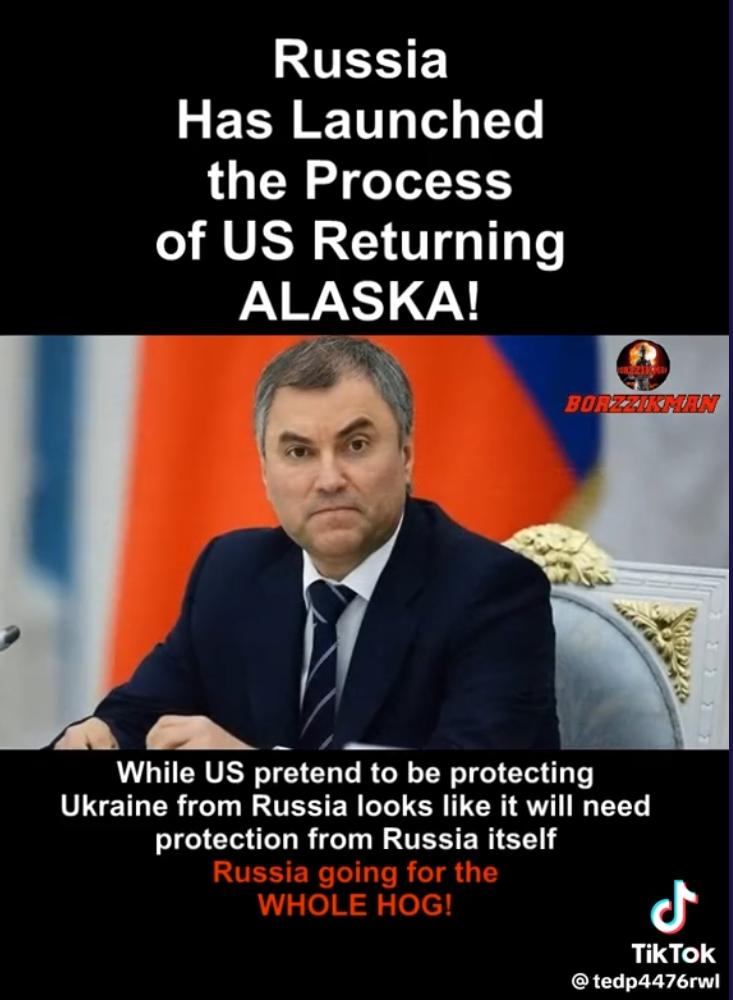
Biden hints at thaw in China ties, but US’ sincerity in doubt — Global Times
Following the latest G7 summit and Quad meeting that outlined a strong stance against China and ramped up efforts to hype China-related issues, US President Joe Biden adopted an apparently softer tone by claiming that the frosty bilateral relations between China and the US will begin to “thaw” very shortly, hoping to open more lines of communication with China and hinting at easing sanctions on a Chinese official.
Chinese experts believe that Biden’s message was sent as the G7 is somehow divided on how to deal with China and as Washington itself faces growing domestic economic woes and international dilemmas like the Ukraine crisis. While they hold a cautious attitude on whether Biden’s rhetoric toward China will turn into a reality, some experts pointed out that the necessary conditions for US-China relations to “thaw” is Washington respecting Beijing’s core interests and fulfilling its commitment instead of “saying one thing and doing another.”
Also, the so-called potential thaw in relations can only be superficial, for example, the resumption of high-level interactions between officials of the two sides, but Washington’s fundamental understanding and its China policy show no change, some experts said. Any real improvement in China-US relations depends on whether the US takes concrete actions to create a positive atmosphere.
Changing rhetoric
Despite the G7 issuing a harshly toned communiqué, which drew strong opposition from the Chinese side on Sunday, Biden said when wrapping up the summit that “he expected a thaw in relations with China,” calling the recent balloon incident between the two countries “silly” and hinting at lifting US sanctions on Chinese defense minister Li Shangfu, according to media reports.
“China and the US have maintained the necessary communication, but if the US uses any means to suppress and contain China and imposes sanctions on Chinese officials and enterprises, what is the sincerity and significance of such communication?” Mao Ning, spokesperson of the Chinese Foreign Ministry, said during a press conference on Monday.
China has always been firmly opposed to the illegal unilateral sanctions in question and has stated its solemn position to the US side. The US should immediately lift the sanctions and take concrete actions to clear obstacles for dialogue and communication, and create a favorable atmosphere and conditions, the spokesperson said.
Biden’s message reflected the paradoxical mindset of the US and some Western countries, some experts said. On the one hand, Washington has been ramping up efforts to smear and distort China-related matters in order to keep Beijing under pressure for dialogue while maintaining pressure on its allies to adopt a similar stance. On the other hand, some of its allies, such as France and Germany, prefer to find opportunities in China’s development and oppose political, economic and military confrontation with China, which makes the divergences inside the Western bloc even more apparent.
Despite the US’ lack of sincerity in its communications with China, coupled with its ill-intentioned attempts to contain China, it’s necessary for the two countries to keep communication channels open to keep some divergences under control, some experts said, who also believe that the necessary condition for easing bilateral relations is the US government matching its words with its actions.
Biden on Sunday said the G7 nations had agreed on “a united approach” to China that called for “diversifying supply chains” to reduce dependence on any one country, and hinted that “he could speak with the Chinese President soon,” Reuters reported.
G7 leaders outlined a shared approach to “de-risk, not decouple” economic engagement with China, and Biden further explained that this approach means taking steps to “diversify supply chains,” “resist economic coercion and protect advance technologies for national security.” Some US media outlets such as the New York Times described this “newly fashionable term” as reflecting an evolution in the discussion on dealing with China, as the term “de-risking” caught on after a speech by European Commission president Ursula von der Leyen, in March before her trip to China.
Sincerity in question
The US government has been intensifying its technological and political wrestling with China and has been pressuring the bloc’s six other countries to take the same stance. “But apart from Japan, other allies will not be willing to see China-US relations become so intense, or even confrontational,” Lü Xiang, a research fellow at the Chinese Academy of Social Sciences, told the Global Times on Monday.
“Particularly, among its European allies, although they have differences with China, they are not willing to confront it politically, economically and militarily, which made the Biden administration adjust some of its rhetoric on China,” he said.
Meanwhile, the Biden administration is facing an intensifying partisan struggle on debt standoff and a looming recession in coming months, in addition to the Ukraine crisis that has become an unsustainable burden, all of which led to the change in rhetoric, Lü noted.
However, some experts expressed doubt over whether that changing rhetoric could turn into action and whether the Biden administration will take the necessary steps to create a favorable atmosphere for the true improvement of bilateral relations.
“It’s believed that the so-called thaw means the resumption of high-level interactions. For example, our commerce minister is scheduled to meet his US counterpart this week, and our new ambassador to the US will soon embark on his trip,” Wu Xinbo, director at the Center for American Studies of Fudan University, told the Global Times on Monday.
Meanwhile, the US may push for some cabinet-level officials to visit China, Wu said, noting that such an “improvement” may only be superficial as the overall atmosphere between the two countries is still negative.
Chinese Commerce Minister Wang Wentao will travel to the US this week for meetings with US Commerce Secretary Gina Raimondo and Trade Representative Katherine Tai, US media NBC News reported on Friday.
Recently, China’s top diplomat Wang Yi had a more than 10-hour talk with the US National Security Advisor Jake Sullivan in Vienna on major topics including bilateral relations, the Taiwan question, the Asia-Pacific situation and the Ukraine crisis.
Mao, the spokesperson of the Chinese Foreign Ministry, said the Chinese side has always developed China-US relations following the principle of mutual respect, peaceful coexistence and win-win cooperation. “We urge the US side to correct its understanding of China, stop interfering in China’s internal affairs, stop harming China’s sovereignty, security and development interests, and meet China halfway to take concrete actions to get China-US ties back on the right track,” she said.
“Apparently, the US has changed its rhetoric, but its true intention of containing China has not changed. It needs to take more concrete actions to truly create an atmosphere for such a thaw,” Wu said.
Giant Cockroach Float: Is That A Cockroach In The Pool?

Nothing quite beats the cool water of a refreshing dip in a pool. That is unless you have to deal with the crowds at a community pool. Don’t get me wrong, I love community pools…l just do not like the crowds! There are many things you can do to clear the crowds out of a community pool. There is always the classic prank of dropping a Baby Ruth candy bar and watching people run to their cars! However, I always like to take things in a subtle way and avoid overall panic.
h/t: coolthingstobuyfor





How does the United States compete with China without using military force?
It is a very good question. One deserving an answer.
…
The United States can compete in many fields. May I offer some areas that the United States can try to compete in…
- Economic. Have a positive economic environment that is not subject to inflation or abuse.
- Financial. Provide a stable currency, and rock solid assets that are not prone to seizure or collapse.
- Technical / Scientific. Provide a healthy and open environment where scientists and engineers are well trained, free of social engineering, and quota restrictions. Pay them well; more than lawyers or community organizers.
- Environmental. Restrict the use of environment destroying technologies, and provide open and cheap alternatives in transportation, food, and housing.
- Social. Provide a family and community friendly environment. With polices that value traditional family, and supportive of traditional gender roles.
The United States can also try to compete in…
- Manufacturing. Have strong infrastructure, pro-worker laws, and a factory supportive community.
- Society. A community and society free of excess taxation and rules.
The United States can try to compete against China in these areas, but, I am sad to say that it is highly unlikely to be successful.
11-Year-Old Says He Is a Combat SOLDIER
It’s reported the leaders of G7 would discuss ways of countering Chinese “economic coercion” as part of wider plans to take a tougher stance towards Beijing. Why will G7 leaders do it?
Let’s talk about the G7 summit and the spotlight on China. Despite not being a participant, China is undoubtedly on the agenda. Here’s why they can’t help but be obsessed with us.
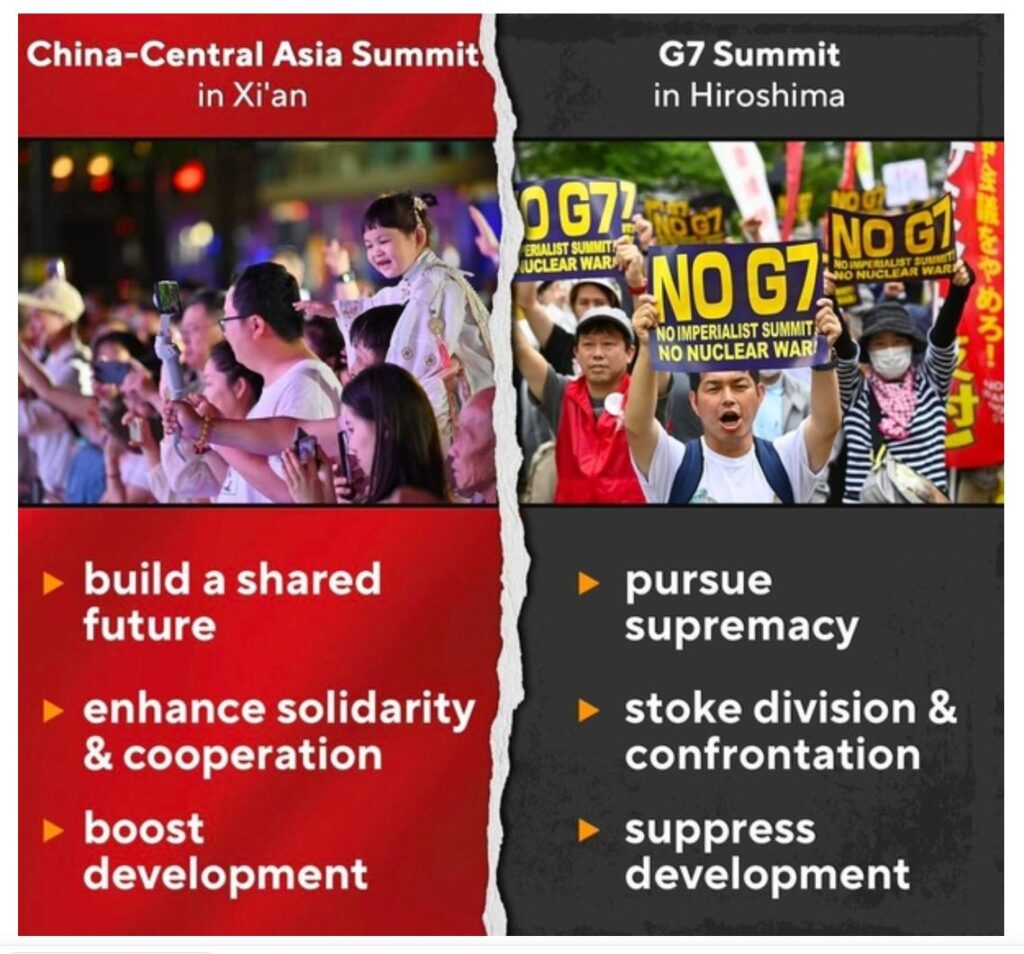
China is a country that they hate, they love, but they cannot leave. They crave China’s capital, market share, supply chains, and unparalleled growth prospects. They benefit from China in countless ways, yet they resent our refusal to join their exclusive club.
The G7 wants China to conform to their “international rules.” But let’s be clear: their rules are not truly international. They are a product of Western values and interests. China upholds the principles of the UN Charter, which should be the true foundation of Intl. relations.
China’s rise challenges their dominance. They fear our economic power and influence. They worry that we will reshape the global order, creating a more multipolar and balanced world. To them, we are a threat, an evil that disrupts their established hegemony.
But let’s not forget: China’s commitment to peace and development has benefited the world. In the past decade, we have contributed more to global economic growth than the entire G7 combined. We offer stability, opportunity, and insurance, not risk.
The G7 needs to realize that the world cannot afford to go back to an era of ideological divisions, exclusive clubs, and small-minded thinking. What the world needs is inclusivity, cooperation, and the pursuit of shared prosperity. China is at the forefront of this vision.
As they discuss China behind closed doors, let’s remember that their own actions are not beyond scrutiny. Their aggressive military interventions, market distortions, and bullying tactics pose real risks to global peace and economic stability.
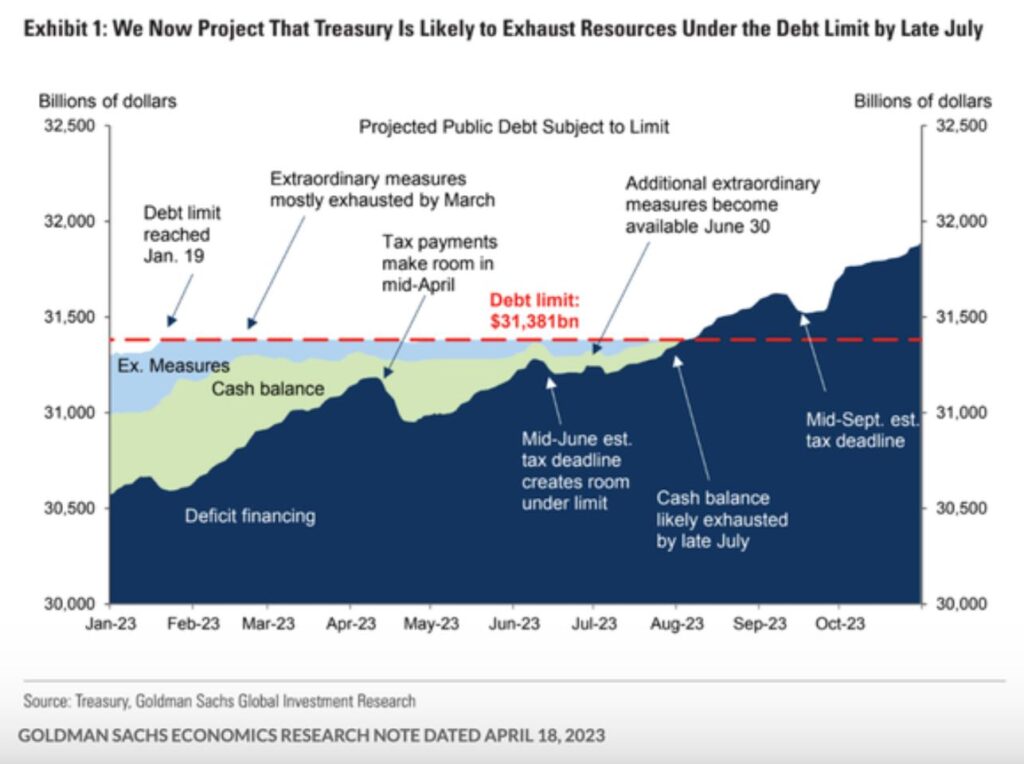
Instead of fixating on China, the G7 should focus on addressing pressing global challenges: climate change, poverty, inequality, and certain country’s debt ceiling crisis. These issues require collaboration, not division.
It’s time to recognize that the world is changing. China’s rise is an opportunity, not a threat. Let’s embrace a future where all nations, big or small, work together on an equal footing to build a prosperous and harmonious world.
Tori Amos – Cornflake Girl (US Version) (Official Music Video)
G7- A display of hypocrisy, vanity and elitism
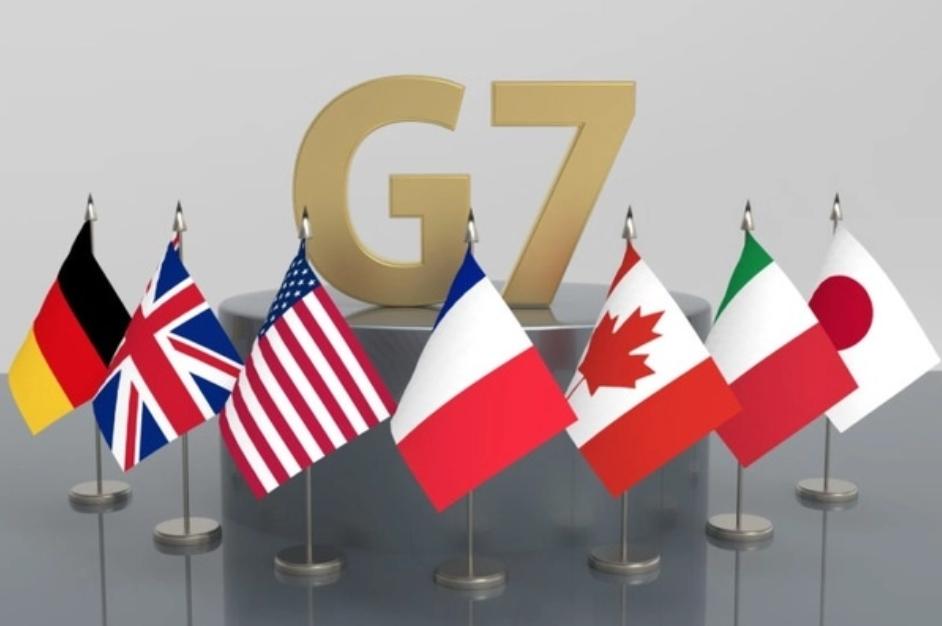
For me personally, the G7 summit is up amongst the most insufferable political events of the year.
That’s because it is an exclusive club borne out of the United States, motivated by ideology, hegemony and thus, elitism, which it then uses to try and force its agenda on the rest of the world.
Although it was originally conceived of the “world’s seven largest economies” that is no longer a reality in practice, and it has thus become an “old guard” for how they believe the world ought to be.
In the process, the US is attempting to tailor it into a distinctive “Anti-China” grouping.
In its vanity summit yesterday, the group subsequently adopted the term “derisking” in application to China, claiming that while they did not want to “decouple” or “inhibit” China’s development, they nonetheless do not wise to allow China to have any geopolitical leverage or ability to “set the rules”, which of course they decide for themselves, and subsequently don’t follow either.
On such a premise, they hypocritically denounced China’s so-called “economic coercion” which is a Washington D.C buzzword used exclusively to Beijing’s ability to apply economic punishment to countries in the name of its national interests, with of course only G7 nations “being allowed to do that” and getting instead to call it “sanctions”.
Actions thus speak louder than words, and despite the language being in such “compromise” terms, which avoided being overtly confrontational, the reality is that G7 are collectively denying China the right to be an influential power on the global stage and in effect, to be a “ruler taker” as opposed to a “rule maker”.
There is no connotation that China can be an “equal” partner.
That is, as it has always been, that Beijing may only exist under the terms and conditions set for it by the west, and not for that matter, defining or advocating its national interests on its own terms.
When this is considered, what other policy options is the group effectively advocating, other than for the explicit containment of the rise of China?
One noticeable hallmark of the summit is that G7 attempting to morph itself into a “wider coalition” to steer the global agenda, of which China is locked out of.
The wider G20, once a hallmark of globalisation amidst the global financial crisis, is now treat with contempt by the west as it means compromising with “unfavourable” countries, including China and Russia, leading them to paralyze it as a functional body.
In doing so, the G7 now “cherry-picks” countries it wants to try and woo, inviting them to the summit but of course, not allowing them to set the agenda.
In doing so, Japan, who was the host, invited India, Vietnam, Indonesia, Australia, South Korea and Brazil, amongst others, as part of Kishida’s bid to “woo the global south”.
Of course, it would be disastrous for the Global South to buy into the G7’s agenda, because for them it means perpetual subservience to the agenda of the west of which leverages the right to economic development and prosperity upon the geopolitical terms and conditions they set for them, which in practical reality condemns them to perpetual poverty.
Part of this theme at the meeting likewise involved proposing alternatives for the belt and road initiative (yet again), speaking of which, it might be reminded that in 2021 the summit focused on a mega project to rival the BRI titled: “Build Back Better”.
Two years later, not only did nothing come of such, but it was never even as much heard of again.
This leads to the next point, that the G7 Summit is ultimately “all talk”.
It is a forum for vanity, a forum for posturing and a false calibration of unity, which is now attempting to rebrand itself as a configured unit and formalised multilateral organisation.
It isn’t, and its proposals to counter China by doing “X, Y, Z” usually with developing countries, almost always comes to nothing, and that’s because G7 is currently premised on a denial of “how the world actually is” as opposed to “how they would like it to be.”
That is, the fundamental denial of China’s rise in economic power and the belief they can still dictate the “rules” to a country as large and influential as Beijing, i.e such as the “economic coercion” nonsense.
But of course, this flutters in the reality that G7’s share of the global GDP is falling, whereas that of China and other developing nations, is rising. The group is thus a projection of western idealism.
Its relevance is declining, and perhaps in realising that, they are so eager to hold onto the position of privilege and power they once had.
But there’s no turning back the clock.
When China’s economy ultimately overtakes the United States, and when it breaks past the technological embargo they are attempting to impose on it, all of this is bound to look very silly, if not in vain.
Everyday objects that have become OBSOLETE
A pair of Chinese girls
And the American jackass who commented on this picture by saying…
"Do the Chinese look in the mirror even though their face is hideous?"

DIO- Caught In The Middle- Don’t Talk To Strangers- Straight Through The Heart (Live 2005)
Costillas de Tejas (Texas Ribs)
(BPT) – Chef Servantes, a self-taught pitmaster and former champion and now judge of Food Network’s hit show — Chopped — is widely known for his one-of-a-kind blends of New American Cuisine with Texas flair. Servantes is world renowned for using Smithfield Fresh Pork because of its quality, freshness and consistently great flavor.

Grilling is a proud tradition in every Hispanic community — from Mexico, Puerto Rico, Peru, Colombia, Argentina, the Dominican Republic, Cuba and even in the U.S., every community uses the grill to create one-of-a-kind flavors. It’s a tradition steeped in history, and the first-ever Smithfield Fresh Pork Grilling Cup, “Copa de la Parrilla,” invites Hispanic chefs to share their unique grilling styles with the world.
Prep: 30 min | Cook: 6 1/2 hr | Yield: 4 to 6 servings
Ingredients
Barbecue Sauce
- 2 tablespoons canola oil
- 1 small sweet yellow onion, coarsely chopped
- 3 cloves garlic, coarsely chopped
- 1 cup ketchup
- 1/3 cup cold water
- 1 chipotle chile, chopped (from can of chipotle chiles in adobo)
- 2 tablespoons dark brown sugar
- 1 heaping tablespoon, Dijon mustard
- 1 tablespoon honey
- 1 tablespoon molasses
- 1 tablespoon red wine vinegar (or sherry vinegar)
- 1 tablespoon Worcestershire sauce
- 2 tablespoons ancho chile powder
- 1 tablespoon sweet Spanish paprika
Costillas de Tejas
- 1/4 cup packed dark brown sugar
- 1 1/2 tablespoons ancho chile powder
- 1 tablespoon smoked or sweet paprika
- 1 1/2 teaspoons onion powder
- 1 1/2 teaspoons kosher salt
- Pinch cayenne or chipotle powder
- Freshly ground black pepper
Ribs
- 2 racks Smithfield Pork Spareribs, membrane removed
Instructions
- Barbecue Sauce: Heat oil in saucepan over medium-high until warm and shimmering. Add onion and cook until softened, 3 to 4 minutes. Add garlic and cook 1 minute. Stir in ketchup and water; bring to boil, stirring frequently. Reduce heat to medium-low and simmer for 5 minutes.
- Stir in remaining ingredients; bring to a simmer. Cook, stirring occasionally, until thickened, about 10 minutes. Let cool for at least 10 minutes.
- Scrape the barbecue sauce into bowl of food processor or blender; purée until smooth or desired consistency. Sauce will be very thick; let cool to room temperature. Taste and season with salt and pepper. Can be used immediately, however flavors will be more complex if kept overnight. Extra sauce can be stored in refrigerator for up to one week.
- Costillas de Tejas: Heat oven to 200 degrees F. Place wire rack on aluminum foil covered baking sheet.
- Combine brown sugar, ancho chile powder, paprika, onion powder, salt, cayenne and black pepper in small bowl; mix well.
- Ribs: Place 2 sheets of heavy duty aluminum foil on counter (each about 4 inches longer than ribs). Place each rib rack on a piece of foil; sprinkle generous amount of spice rub over meaty side and massage into the meat. Turn over ribs and repeat on bone side. Seal ribs in foil and place, meaty side down, on rack on baking sheet.
- Bake ribs at 200 degrees F for 4 hours; reduce oven temperature to 175 degrees F and bake an additional 2 hours, until ribs are very tender and just about falling off the bone.
- Open foil packets and discard juices. Brush barbecue sauce over ribs; cut and serve.
TV On The Radio – Wolf Like Me (Official Music Video)
Bad feelings toward one of my favorite airlines
‘If you cannot say blanket in English, you cannot have it’: Flight attendants involved in discriminative behaviors sacked

A recent article written by a netizen that a Cathay Pacific flight attendant discriminated against a non-English-speaking passenger is trending on Weibo on May 23, sparking widespread debate in society. Cathay Pacific issued a statement regarding the incident last night: The airline is aware of the passenger’s unpleasant experience on flight CX987 and apologizes for the incident.
Cathay Pacific stated that it is committed to providing passengers outstanding customer service and takes this incident very seriously. The airline has reached out to the affected passenger for further understanding of the situation and will conduct a thorough investigation. Cathay Pacific would like to apologize again for any inconvenience this incident may have caused.

As previously reported, a netizen posted on the social media platform Xiaohongshu that the flight attendants discriminated against non-English speaking passengers when he flew with Cathay Pacific. The netizen said he was on Cathay Pacific flight CX987 from Chengdu to Hong Kong on May 21, 2023, and was seated in the back row, where the flight attendants were preparing a meal and taking a break. The netizen described the Cathay Pacific flight attendants as using English and Cantonese to complain about passengers during the flight. The flight attendants made fun of others for asking for a carpet instead of a blanket in English. “If you cannot say blanket, you cannot have it…carpet is on the floor,” a flight attendant said, according to a recording that was circulated widely online.
“I think the front-row passengers tried to use English to get blankets from these ‘English-only’ attendants and were made fun of instead,” he described, “the passenger in the row in front of the user also received an impatient response when he tried to ask the flight attendant in English how to fill in his arrival card.”

In addition, a flight attendant even said to her colleagues in Cantonese, “They don’t understand human language”, and “The entire flight lasted for two and a half hours, but the insulting words and the strange attitude towards the passengers were spoken right behind me for two and a half hours.” The netizen could not understand why there was so much malice towards passengers who did not speak English or Cantonese and why they could not show basic respect to passengers without asking for extra warm service. Ultimately, the netizen approached the flight attendant to explain the situation before disembarking from the plane and said he would make a formal complaint.
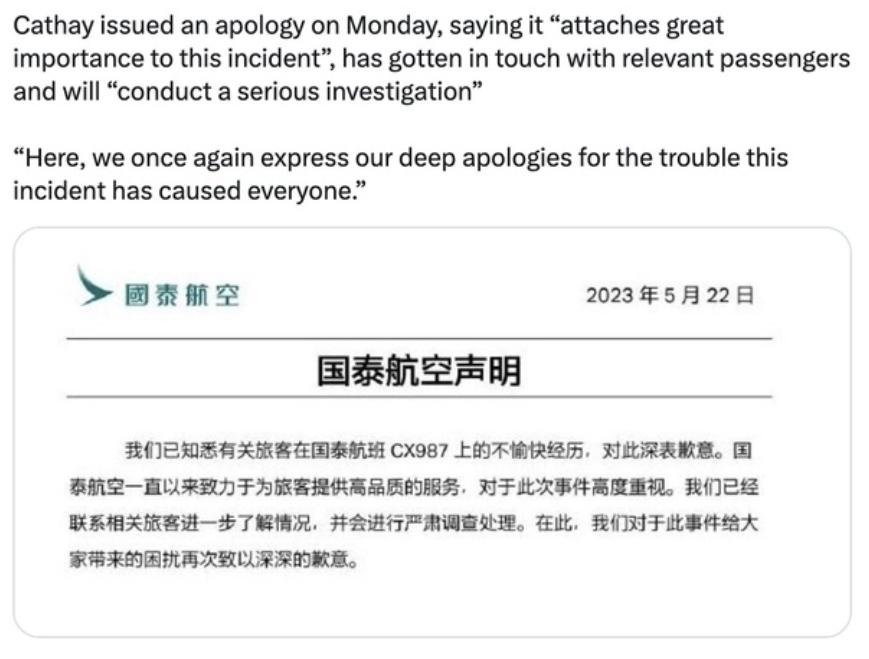
On the afternoon of 23 May, Cathay Pacific issued a second statement on its Weibo account, apologizing once more for the widespread concern regarding the passenger’s experience on flight CX987 on May 21. The statement said it takes this incident very seriously and has already contacted the passenger to learn more about the situation. Now, the flight attendant has been suspended from duty, and an internal investigation will begin immediately, with the outcome to be announced within three days.
The Chief Executive Officer of Cathay Pacific, Mr. Ronald Lam, said in an updated statement on 23 May that as Chief Executive officer of Cathay Pacific, on behalf of Cathay Pacific, he would like to once again express sincere apologies to the passengers and the community affected by the experience on Cathay Pacific Flight CX987 on 21 May.
“At present, we have completed our investigation into the incident and have dismissed the three attendants in accordance with the company’s rules and regulations,” the statement said.
“I would like to reiterate that Cathay Pacific has a zero tolerance attitude towards serious breaches of our rules, regulations and code of ethics by individual employees,” Mr. Lam added.
In order to prevent this kind of incident from happening again, Mr. Lam will personally lead an inter-departmental task force to conduct a comprehensive review and re-examine our service processes, personnel training and related systems to further enhance the quality of Cathay Pacific’s service.
“The most important of these is to ensure that all Cathay Pacific staff are respectful of visitors from different backgrounds and cultures, and can provide professional and consistent service in all service areas,” he added.
Interrogation Of A Psychopathic Woman
Americans Say Families Need $85,000 To Get By, Up From $58,000 In 2013
By Mary Claire Evans of Gallup
Americans, on average, estimate that a family of four needs a minimum income of $85,000 annually to “get by” in their community, marking a considerable increase from a decade ago. The past decade has witnessed not only an increase in the average income required but also a notable shift in the upper range of income expectations.
During that time, the proportion of Americans who believe that a family needs more than $100,000 to get by has tripled to 30%, while 18% now estimate it to be between $75,000 and $99,999, and 31% think it is $50,000 to $74,999. Half as many Americans now as in 2013 believe a family of four can get by on less than $50,000 annually. This includes 3% who estimate a figure lower than $30,000, and 11% who cite a figure between $30,000 and $49,999.

The latest average of $85,000, from an April 3-25 Gallup poll, is notably higher than the federal poverty line for a family of four, which is currently $30,000.
In 2013, the average estimate was $58,000, and the federal poverty line for a family of four was $23,550. Accounting for inflation and the subsequent change in purchasing power, Americans’ 2013 estimate translates to $75,668 in 2023 dollars. Their 2023 estimate therefore reflects an increase of about $9,000 in perceived family needs beyond what inflation alone would account for.
Higher-Income Respondents Believe Families Need More
Americans’ perceptions of the minimum income a family of four needs are influenced by their own financial circumstances. Specifically, those with an annual household income of $100,000 or more project $100,000, on average, as necessary for a family to get by. Middle-income respondents, those with between $40,000 and $99,999 in annual income, estimate a family needs about $80,000. Meanwhile, those earning less than $40,000 believe an income of about $66,000 suffices.

Eastern, Suburban Residents Give Higher Estimates
Geographical location also influences Americans’ perceptions of the income needed for a family of four to get by. Notably, residents in the Eastern U.S. estimate, on average, that families need an income of about $98,000, which is significantly more than the estimates from other regions. Residents in the Midwest have the lowest estimate, saying families need an average income of $76,000. These regional differences likely reflect variations in cost of living, housing prices and wage levels.
Similarly, Americans’ views on the minimum income for a family of four are influenced by their urbanicity. Those residing in cities (about $87,000) and suburban areas ($91,000) project a higher required income for a family of four than those living in towns or rural areas ($78,000).

These findings are similar to those from 2013, when Eastern and suburban residents’ estimates of what a family of four needs to get by were substantially higher than those given by people in other regions or urbanicities.
Bottom Line
The rise in perceived necessary income to support a family of four highlights the economic pressure facing American households as high inflation stretches into a second year.
There is a diversity of socioeconomic realities across various population segments and geographic locations. Notably, individuals residing in urban and suburban areas, as well as those with higher incomes, tend to estimate a higher necessary income for a family of four. These patterns might reflect their cost-of-living circumstances as well as differences in perceptions of need and evolving lifestyle aspirations.
The increasing estimate of required income may also be linked to the rise in two-income families. Americans’ average estimate for getting by sits at $85,000, an amount more likely to be reached only in families with dual incomes, further emphasizing the changing economic dynamics of American households.
U.S.-China tensions to “thaw very shortly” — Biden
According to Kyodo News, U.S. President Joe Biden said Sunday he believes that heightened tensions between the United States and China will “thaw very shortly.”
He said a previous agreement with Chinese President Xi Jinping on the importance of implementing a military hotline had rapidly soured in the wake of the balloon controversy as tensions escalated.
“I think you’re going to see that begin to thaw very shortly,” Biden said before leaving the Japanese city, where he attended the Group of Seven summit and held talks with many leaders, including Ukrainian President Volodymyr Zelenskyy.
“We’re not looking to decouple from China. We’re looking to de-risk and diversify our relationship with China,” Biden told a press conference after a three-day summit with G7 leaders. He said G7 nations were more unified than ever in terms of “resisting economic coercion together and countering harmful practices that hurt our workers.”
Daughter Recalls Persecution In the Middle Ages
https://youtu.be/8RSdjzoR1tQ
Unleashing innovation at sea! China to deliver world’s first 5G cruise ship “Adora Magic City” in 2023
China’s first domestically-built large cruise ship – also the world’s first 5G cruise ship – will be called “Adora Magic City.”
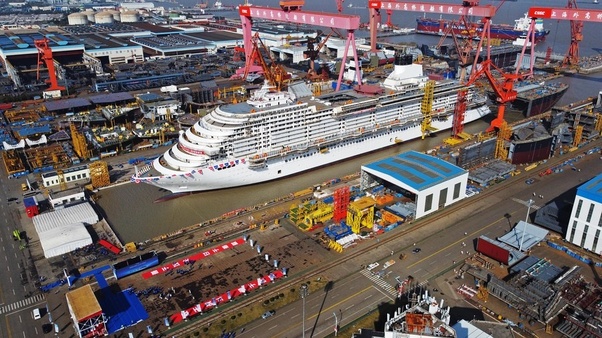
The name was unveiled in Shanghai on Friday, and the ship is expected to be delivered later this year.
“Adora Magic City” aims to offer a unique and immersive cruise experience that seamlessly blends Eastern and Western cultures, with Shanghai serving as its home port in the inaugural season, according to details released at an event held by the municipal culture and tourism bureau and China State Shipbuilding Corporation (CSSC) Cruise Technology Development Co., Ltd. (CCTD).
Jointly designed and built by the CCTD and Shanghai Waigaoqiao Shipbuilding Co. Ltd., the cruise ship, measuring 323.6 meters in length with a gross tonnage of 135,500 tonnes, can accommodate up to 5,246 passengers.
After the successful delivery of the ship, an array of international routes will commence between the home port of Shanghai and neighboring countries.
In addition, medium and long-term routes will be launched to enhance cultural exchanges between China and other countries.
5G cruise ship
Partnered with China Telecom, the construction team will bring 5G connectivity to the “Adora Magic City.”
The cruise ship will be equipped with advanced wireless communication technology, and a Wi-Fi6 and mobile 5G network will be available to provide passengers with the same network experience as on land.
“By seizing a first-mover advantage in the cruise industry’s 5G market, we hope to set a new standard for digital communication in the marine travel sector,” said Chen Ranfeng, managing director of CSSC Carnival Cruise Shipping.
Gong Bo of China Telecom’s Shanghai branch said that “we will focus on network communication, digital high-definition, as well as AR/VR and other content services, in order to further improve the guest experience and jointly promote the high-quality development of the tourism economy.”
Prince – The Most Beautiful Girl In the World
Why will China change the best and superior rules-based international order with stupid jungle order?
This is a “troll question”, but I am giving to give a REAL answer to it.
In regards to the international order, there are two policies “on the table”.
- The (laughingly titled) rules-based order.
This is the uni-polar order. Uni comes from Latin it means “one”. This global order has one nation running the entire planet, and everyone follows the rules that it makes.
This is the United States led world order.
The United States makes the rules and you are ordered to follow them.
- The multi-polar order.
This is the order that is preferred by the vast majority of the world (minus the American proxy nations). Where every nation is sovereign, and operates independently without reporting to another country. Everyone gets one vote, and a “seat at the table”. There are no “veto clauses” such as the USA has in the United nations.
It is modeled after the United Nations, but without the privileges that the United States, and the West now enjoy.
Conclusion
The world is shaping up into a fracturing. Where the United States is isolated from the rest of the world, except from it’s owned proxy nations. We can see this clearly on a map.
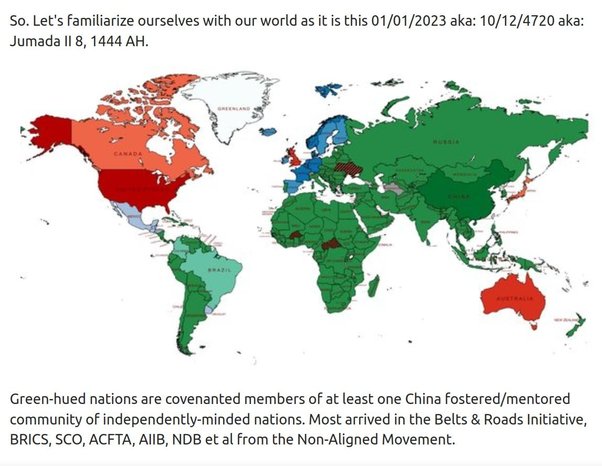
The vast majority of the world is accepting of a multi-polar world, while the tyrannical United States lies isolated, and growing retarded in strength and abilities with each passing day.
Internet “bar-flies” argue that the Untied States will make one great dramatic “lash out” in a futile attempt to regain control over a terribly mismanaged advantage.
But it will amount to nothing. The United States has been in Geo-political “check mate” for a decade, if not longer.
It will be spectacular, no doubt.
But the only ones harmed with be the United States itself, as it slowly sinks into the dark deep waters of the abyss that it created for itself.
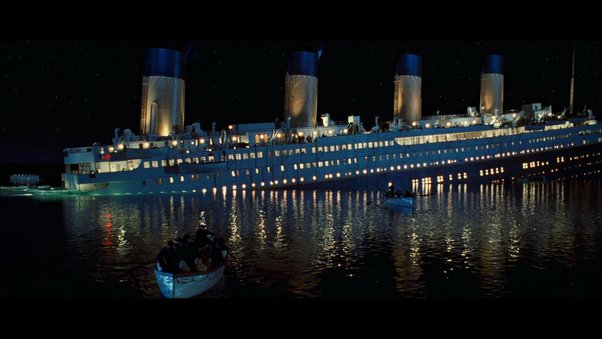
3 Mysterious REINCARNATION STORIES
Rep. Nadler “Wouldn’t Care” If Ukraine Used F-16s To Strike Russian Territory
Authored by Dave DeCamp via AntiWar.com,
Rep. Jerry Nadler (D-NY) said Wednesday that he “wouldn’t care” if Ukraine used American-made F-16s to strike Russian territory despite the risk of such an attack escalating into a direct clash between the US and Russia.
When asked by Epoch Times reporter Liam Cosgrove if he was concerned about the potential of Ukraine using F-16s to hit targets inside Russia, Nadler said, “No, I’m not concerned. I wouldn’t care if they did.”
NY Congressman @RepJerryNadler told me he “wouldn’t care” if Ukraine used western F16s to strike Russian territory.
He then dismissed the likelihood of that happening, despite Ukrainian forces deploying U.S. weaponry in Russia’s border city of Belgorod earlier this week: pic.twitter.com/oRLmqv0mBm
— Liam Cosgrove (@cosgrove_iv) May 25, 2023
Nadler said it was unlikely Ukraine would use F-16s to attack Russian territory, but Cosgrove pointed out that US-made armored vehicles were used in a cross-border raid in Russia’s Belgorod region that was launched on Monday.
“That may be, but they’re not gonna use major weapons. Things like F-16s, they need for air defense over Ukraine so that they can provide air cover for their counterattack and things like that. They’re not gonna waste it in Russia,” Nadler said.
So far, there’s no clear timeline for when the F-16s will be delivered to Ukraine. President Biden signed off on European countries delivering the Lockheed Martin-made aircraft, but Ukrainian pilots still need to be trained, and estimates for how long that will take vary from a few months to up to two years.
Russia has said providing Ukraine with F-16s brings “colossal risks,” a warning brushed off by President Biden. In the early days of the war, NATO chose not to provide Kyiv with fighter jets over concerns Moscow would perceive the move as the alliance directly entering the war.
What do you think Taiwan is learning from the war in Ukraine?
It doesn’t pay to be anybody’s cannon fodder.
Pháo – 2 Phút Hơn (KAIZ Remix) [Official Music Video]
I read so many negative reports from the West on China-Central Asia relations, debt trap, and edging in the Russian backyard. Are those creditable when defining their relations?
Thanks, Andy for the question. I think I am qualified to respond to your question because I was one of the journalists who was covering the China-Central Asia Summit live in Xi ‘an.
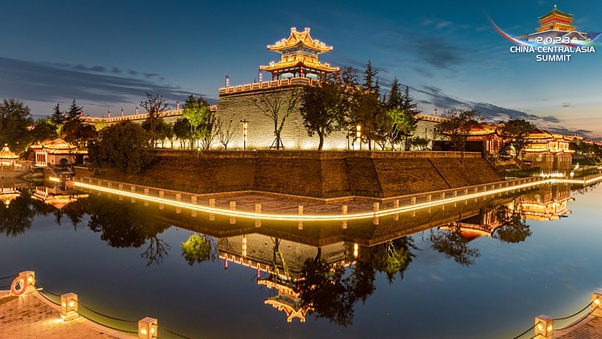
As a reporter of international current affairs, I think it is very necessary to be critical of the news, especially Western news coverage of China. If you know anything about China or do any real research, you will find that much of what is reported about China in the West is discredited and have no factual basis. So it is with the recent China-Central Asia summit.
I’ve been also reading a lot of biased reports on this event in the West lately, and I’ll try to break them down one by one.
Lie 1: China’s Belt and Road Initiative (BRI) is a debt trap.
The “evergreen” “debt trap” accusation has been with BRI ever since its initiation. Let’s burst this bubble with some hard facts.
According to the IMF, as of 2021, the total external debt of Central Asian countries was 35% of their GDP. And China’s share of this debt is less than 10%.
In reality, BRI investments have paved the way for infrastructure development, boosting trade and economic growth.
But who needs facts when one can spin a good yarn about debt traps?
It is now clear that the phrase “Chinese debt trap” is a misnomer that has been coined to scare developing countries from approaching China for soft developmental loans, which the US and the West are unwilling to provide for the uplifting of the infrastructure in these countries.
Lie 2: China is in Central Asia for geopolitical games and threatens Central Asian sovereignty.
A headline in Newsweek reads: China ”Edging U.S. Out of Russian Bastion”, which is a very arrogant or maybe a little offensive view through the predatory Anglo-Saxon lens.
In their eyes, it seems that the only reason countries develop relations with Central Asia is for geopolitical gains, with the underlining notion that Central Asian countries are not worth developing mutually beneficial and friendly relations with other countries, other than to fall into someone’s “bastion.”
In reality, the first and foremost goal of China – Central Asia relations is always for the development of the region so as to serve the needs of both peoples, who have by the way, lived side by side with each other for thousands of years.
According to statistics, in 2022, trade between China and the five countries surpassed $70 billion, and China’s direct investment in the region reached $15 billion.
The Chinese-built tunnel of the Angren-Pap railway line, the longest tunnel in Central Asia, saved local residents the trouble of climbing through the mountains or taking a detour via neighbouring countries.
The China-Kyrgyzstan-Uzbekistan (CKU) highway has become an important international transportation route that runs smoothly through the region’s mountainous terrain, just to name a few outcomes of the close ties between China and Central Asia.
Lie 3: China’s actions undermine regional stability.
The French paper Le Monde had an interesting article on China and Central Asia back in 2022, with the title “China’s support to Central Asia countries represents a threat to the entire region in the medium term”.
Another more recent report from the Caspian Policy Center, a Washington-based think tank, said that “…much of China’s investments into Central Asia have raised the risk of being overconnected to China.”
These ridiculous stances conveniently ignored the fact that a commitment to regional stability, with joint efforts to combat terrorism, extremism, and cross-border crimes from China and all the Central Asian countries is the backbone of the cordial relations. China has actively supported and taken a leading role in initiatives like the Shanghai Cooperation Organization and the Conference on Interaction and Confidence-Building Measures in Asia, which focus specifically on sewing differences and increasing stability.
Besides, China has the longstanding view that “development is the key to overcoming all difficulties”, which includes security and stability.
The Chinese experience, both domestically and internationally, is that with more tangible development, there will be fewer chances for the most vulnerable to resort to extremism and terrorism. But of course, some Western critics prefer to overlook these efforts while peddling their tales of impending chaos.
Conclusion:
Although the full effects of the first China-Central Asia Summit are still unfolding, one outcome is sure to stay: there will be less room left for the exaggerated and distorted Western narrative aiming at sophisticating the relations of countries in the region.
China’s engagement in Central Asia is founded on mutual respect, cooperation, and shared development.
It’s time to put aside the fictional narratives and embrace the reality of a thriving partnership that benefits both China and Central Asian countries.
Perhaps, just maybe, it’s time for Western critics to reassess their storytelling skills and focus on understanding the real dynamics of China-Central Asia relations.
Johnny Winter – Rock and Roll, Hoochie Koo (Live)
Why Are US Military Personnel Heading To Peru?
Authored by Nick Corbishley via NakedCapitalism.com,
The ostensible goal of the operation is to provide “support and assistance to the Special Operations of the Joint Command of the Armed Forces and National Police of Peru,” including in regions recently engulfed in violence.
Unbeknown, it seems, to most people in Peru and the US (considering the paucity of media coverage in both countries), US military personnel will soon be landing in Peru. The plenary session of Peru’s Congress last Thursday (May 18) authorised the entry of US troops onto Peruvian soil with the ostensible purpose of carrying out “cooperation activities” with Peru’s armed forces and national police. Passed with 70 votes in favour, 33 against and four abstentions, resolution 4766 stipulates that the troops are welcome to stay any time between June 1 and December 31, 2023.
The number of US soldiers involved has not been officially disclosed, at least as far as I can tell, though a recent statement by Mexico’s President Andrés Manuel Lopéz Obrador, who is currently person non grata in Peru, suggests it could be around 700. The cooperation and training activities will take place across a wide swathe of territory including Lima, Callao, Loreto, San Martín, Huánuco, Ucayali, Pasco, Junín, Huancavelica, Iquitos, Pucusana, Apurímac, Cusco and Ayacucho.
The last three regions, in the south of Peru, together with Arequipa and Puno, were the epicentre of huge political protests, strikes and road blocks from December to February after Peru’s elected President Pedro Castillo was toppled, imprisoned and replaced by his vice-president Dina Boluarte. The protesters’ demands included:
- The release of Castillo
- New elections
- A national referendum on forming a Constitutional Assembly to replace Peru’s current constitution, which was imposed by former dictator Alberto Fujimori following his self-imposed coup of 1992
Brutal Crackdown on Protests
Needless to say, none of these demands have been met. Instead, Peru’s security forces, including 140,000 mobilised soldiers, unleashed a brutal crackdown that culminated in the deaths of approximately 70 people. A report released by international human rights organization Amnesty International in February drew the following assessment:
“Since the beginning of the massive protests in different areas of the country in December 2022, the Army and National Police of Peru (PNP) have unlawfully fired lethal weapons and used other less lethal weapons indiscriminately against the population, especially against Indigenous people and campesinos (rural farmworkers) during the repression of protests, constituting widespread attacks.”
As soon as possibly next week, an indeterminate number of US military personnel could be joining the fracas. According to the news website La Lupa, the purported goal of their visit is to provide “support and assistance to the Special Operations of the Joint Command of the Armed Forces and National Police of Peru” during two periods spanning a total of seven months: from June 1 to September 30, and from October 1 to December 30, 2023.
The secretary of the Commission for National Defence, Internal Order, Alternative Development and the Fight Against Drugs, Alfredo Azurín, was at pains to stress that there are no plans for the US to set up a military base in Peru and that the entry of US forces “will not affect national sovereignty.” Some opposition congressmen and women begged to differ, arguing that the entry of foreign forces does indeed pose a threat to national sovereignty. They also lambasted the government for passing the resolution without prior debate or consultation with the indigenous communities.
The de facto Boluarte government and Congress are treating the arrival of US troops as a perfectly routine event. And it is true that the US military has long held a presence in Peru. For example, in 2017, U.S. personnel took part in military exercises held jointly with Colombia, Peru and Brazil in the “triple borderland” of the Amazon region. Also, the US Navy operates a biosafety-level 3 biomedical research laboratory close to Lima as well as two other (biosafety-level 2) laboratories in Puerto Maldonado.
But the timing of the operation raising serious questions. After all, Peru is currently under the control of an unelected government that is heavily supported by Washington but overwhelmingly rejected by the Peruvian people. The crackdown on protests in the south of the Peru by the country’s security forces — the same security forces that US military personnel will soon be joining — has led to dozens of deaths. Peru’s Congress is refusing to call new elections in total defiance of public opinion. Just a few days ago, the country’s Supreme Court issued a ruling that some legal scholars have interpreted as essentially criminalising political protest.
As Peru’s civilian institutions fight among themselves, Peru’s armed forces — the last remaining “backbone” in the country, according to Mexican geopolitical analyst Alfredo Jalife — has taken firm control. And lest we forget, Peru is home to some of the very same minerals that the US military has identified as strategically important to US national security interests, including lithium. Also, as I noted in my June 22, 2021 piece, Is Another Military Coup Brewing in Peru, After Historic Electoral Victory for Leftist Candidate?, while Peru’s largest trading partner is China, its political institutions — like those of Colombia and Chile — remain tethered to US policy interests:
Together with Chile, it’s the only country in South America that was invited to join the Trans-Pacific Partnership, which was later renamed the Comprehensive and Progressive Agreement for Trans-Pacific Partnership after Donald Trump withdrew US participation.
Given as much, the rumours of another coup in Peru should hardly come as a surprise. Nor should the Biden administration’s recent appointment of a CIA veteran as US ambassador to Peru, as recently reported by Vijay Prashad and José Carlos Llerena Robles:
Her name is Lisa Kenna, a former adviser to former US Secretary of State Mike Pompeo, a nine-year veteran at the Central Intelligence Agency (CIA), and a US secretary of state official in Iraq. Just before the election, Ambassador Kenna released a video, in which she spoke of the close ties between the United States and Peru and of the need for a peaceful transition from one president to another.
It seems more than likely that Kenna played a direct role in the not-so-peaceful transition from President Castillo to de facto President Boluarte, having met with Peru’s then-Defence Minister Gustavo Bobbio Rosas on December 6, the day before Pedro Castillo was ousted, to tackle “issues of bilateral interest”.
On a Knife’s Edge
After decades of stumbling from crisis to crisis and government to government, Peru rests on a knife’s edge. When Castillo, a virtual nobody from an Andean backwater who had played an important role in the teachers’ strikes of 2017, rode to power on a crest of popular anger at Peru’s hyper-corrupt establishment parties in June 2021, Peru’s legions of poor and marginalised hoped that positive changes would follow. But it was not to be.
Castillo was always an outsider in Lima and was out of his depth from day one. He had zero control over Congress and failed miserably to overcome rabid right-wing opposition to his government. Even in his first year in office he faced two impeachment attempts. As Manolo De Los Santos wrote in People’s Dispatch, Peru’s largely Lima-based political and business elite could never accept that a former schoolteacher and farmer from the high Andean plains could become president.
On December 7, they finally got what they wanted: Castillo’s impeachment. Just hours before a third impeachment hearing, he declared on national television that he was dissolving Congress and launching an “exceptional emergency government” and the convening of a Constituent Assembly. It was a preemptive act of total desperation from a man who held no sway with the military or judiciary, had zero control over Congress, and had even lost the support of his own party. Hours later, he was impeached, arrested by his own security detail and taken to jail, where he remains to this day.
Castillo may be out of the picture but political instability continues to reign in Peru. The de facto Boluarte government and Congress are broadly despised by the Peruvian people. According to the latest poll by the Institute of Peruvian Studies (IEP), 78% of Peruvians disapprove of Boluarte’s presidency while only 15% approve. Congress is even less popular, with a public disapproval rate of 91%. Forty-one percent believe that the protests will increase while 26% believe they will remain the same. In the meantime, Peru’s Congress continues to block general elections.
Peru’s “Strategic” Resources
As regular readers know, EU and US interest in Latin America is rising rapidly as the race for lithium, copper, cobalt and other elements essential for the so-called “clean” energy transition heats up. It is a race that China has been winning pretty handily up until now.
Peru is not only one of China’s biggest trade partners in Latin America; it is home to the only port in Latin America that is managed entirely by Chinese capital. And while Peru may not form part of the Lithium Triangle (Bolivia, Argentina and Chile), it does boast significant deposits of the white metal. By one estimate, it is home to the sixth largest deposits of hard-rock lithium in the world. It is also the world’s second largest producer of copper, zinc and silver, three metals that are also expected to play a major role in supporting renewable energy technologies.
In other words, there is a huge amount at stake in how Peru evolves politically as well as the economic and geopolitical alliances it forms. Also, its direct neighbour to the north, Ecuador, is undergoing a major political crisis that is likely to spell the end of the US-aligned Guillermo Lasso government and a handover of power to Rafael Correa’s party and its allies.
And the US government and military have made no secret of their interest in the mineral deposits that countries like Peru hold in their subsoil. In an address to the Washington-based Atlantic Council on Jan 19, Gen. Laura Richardson, head of the U.S. Southern Command, spoke gushingly of Latin America’s rich deposits of “rare earth elements,” “the lithium triangle — Argentina, Bolivia, Chile,” the “largest oil reserves [and] light, sweet crude discovered off Guyana,” Venezuela’s “oil, copper, gold” and the fact that Latin America is home to “31% of the world’s fresh water in this region.”
She also detailed how Washington, together with US Southern Command, is actively negotiating the sale of lithium in the lithium triangle to US companies through its web of embassies, with the goal of “box[ing] out” US adversaries (i.e. China and Russia), concluding with the ominous words: “This region matters. It has a lot to do with national security. And we need to step up our game.”
Which begs the question: is this the first step of the US government and military’s stepping-up-the-game process?
The former president of Bolivia Evo Morales, who knows a thing or two about US interventions in the region, having been on the sharp end of a US-backed right-wing coup in 2019, certainly seems to think so. A few days ago, he tweeted the following message:
The Peruvian Congress’ authorisation for the entry and stationing of US troops for 7 months confirms that Peru is governed from Washington, under the tutelage of the Southern Command.
The Peruvian people are subject to powerful foreign interests mediated by illegitimate powers lacking popular representation.
The greatest challenge for working people and indigenous peoples is to recover their self-determination, their sovereignty and their natural resources.
With this authorization from the Peruvian right, we warn that the criminalization of protest and the occupation of US military forces will consolidate a repressive state that will affect sovereignty and regional peace in Latin America.
Mexico’s President Andrés Manuel Lopéz Obrador, who refuses to acknowledge Boluarte (whom he calls the “great usurper”) as Peru’s president and has recently faced threats of direct US military intervention in Mexico’s drug wars from US Republican lawmakers, had a message for the US government this week: “[Sending soldiers to Peru] merely maintains an interventionist policy that does not help at all in building fraternal bonds among the peoples of the American continent.”
Unfortunately, the US government does not seem interested, if indeed it ever has been, in building fraternal bonds with the peoples of the American continent. Instead, it is set on upgrading the Monroe Doctrine for the 21st century. Its strategic rivals this time around are not Western European nations, which are now little more than US vassals (as a recent paper by the European Council of Foreign Relations, titled “The Art of Vassalisation”, all but admitted), but rather China and Russia.
Cream of Green Chile Soup
This soup was famous at the Anasazi in Midland, Texas, which has now closed.

Ingredients
- 1 1/2 cups chicken broth
- 1/3 cup minced onion
- 1 large garlic clove
- 1/2 ounce fresh mild green chiles, such as Anaheim, roasted and chopped
- 8 ounces cream cheese, softened
- 1 cup sour cream
- 1/4 teaspoon ground cumin
- 1 cup Half-and-Half
- Freshly-ground white pepper, to taste
Instructions
- In a saucepan bring the broth to a boil with the onion. Boil the mixture for 5 minutes, and let it cool.
- In a food processor chop fine the garlic and the chiles; add the cream cheese, sour cream and cumin. Blend the mixture until it is combined well.
- With the motor running add the broth mixture in a steady stream. Blend the mixture until it is combined well, and transfer it to a large bowl.
- Stir in the Half-and-Half, white pepper and salt to taste, and chill the soup, covered, for at least 2 hours or overnight.
Makes about 8 cups, serving 8 to 10.
Eric Clapton We’ve ended as lovers Live Albert Hall May 22 2023 Jeff Beck Tribute
https://youtu.be/35BbNtQGluM
Bravo China!
China has slapped a ban on US chipmaker Micron, prohibiting it from selling to Chinese companies involved in key infrastructure projects. Beijing has mirrored Washington’s sanctions on the People’s Republic’s hi-tech technology, Asia-Pacific consultant Thomas W. Pauken, adding that there’s more to the development than meets the eye.

The Cyberspace Administration of China (CAC) announced on May 21, that a cybersecurity review indicated Micron Technology’s products “have relatively serious cybersecurity risks, which pose significant security risks to the country’s critical information infrastructure supply chain and would affect national security.”
Thus, the CAC banned the US chipmaker from participating in the People’s Republic’s domestic critical infrastructural projects. In response, the US Commerce Department expressed its opposition to the restrictions, insisting that they “have no basis in fact.” Micron’s shares plummeted roughly 6% on Monday, given that the American company used to derive over 10% of its revenue from the People’s Republic.

Since October 2022, Washington has imposed sweeping export curbs on advanced chips and chip-making equipment to China, trying to cut off the nation’s access to critical technology. Prior to that, under the Trump administration, the US and its Western allies kicked off nothing short of a crusade against the People’s Republic’s telecom giants, including its flagship Huawei, citing “security” concerns.
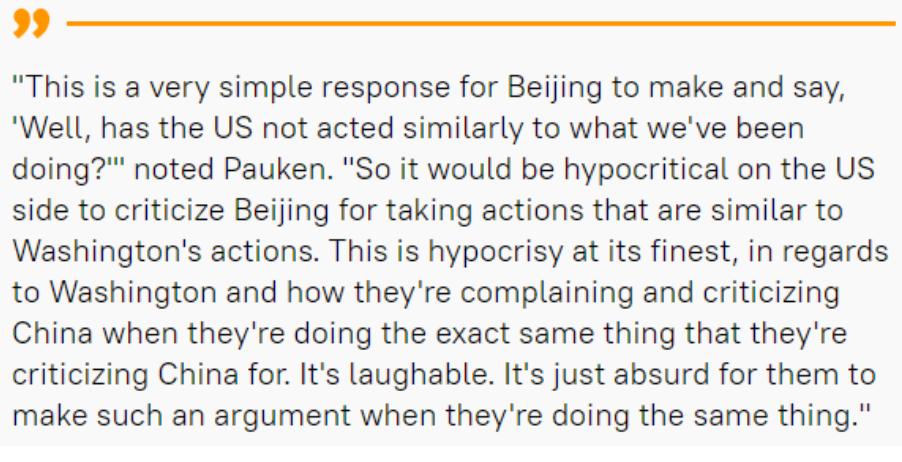
Kunstler: Fade To Black In Ukraine
Authored by Jim Kunstler via Kunstler.com,
“Following the ouster of Mr. Trump in 2020, this new-new-left had exactly what it had been clamoring for, a liberal Democrat in the White House. Given the sense of impending catastrophe at present, it may be difficult to remember precisely how much sniveling bullshit went into selling Joe Biden.” - Rob Urie
Have you noticed that the president of Ukraine (or, governor of America’s fifty-first state), Mr. Zelensky, has been globe-trotting for weeks: London, Helsinki, Paris, Hiroshima? That’s because this is one of those months when years happen; the world is changing at hyper-speed. He seems to be running scared, a little bit, trying to keep ahead of the changing game. What sounded like a great idea to a certain claque of so-called neo-cons in our country — to use Ukraine as a bear trap — has instead rather suddenly revealed Europe’s and America’s manifold bankruptcies and revolted the whole rest of the world outside of Western Civ. Oh, the wonder and nausea!
Try to imagine Mr. Zelensky’s predicament.
Mighty America and redoubtable Europe conned the former comedian to thinking that if he went along with a genius scheme to ruin Russia and knock Vlad Putin off the global gameboard, his sad-sack country would be transformed into something like Ukro-Disneyworld, while he, Mr. Z, would be lionized and made rich beyond his wildest imaginings. His backup was the greatest hegemonic power the world has ever seen. The game was called Let’s You and Him Fight
The poor schlemiel fell for it. He let NATO (that is, the USA) set-up, equip, and train the largest army in Europe, including battalions of bad-ass, hard-core Ukro-Nazis — who had previously been so useful in the American-sponsored 2014 Maidan “color revolution.” Mr. Z followed the US State Department’s orders to rain down rockets and artillery on Russian-speakers who lived in his own eastern provinces. He formally applied for membership in the NATO club. His country received billions of US dollars without audit oversight, just screaming to be creamed off by Ukraine’s leadership — who, after all, deserved a little something for all these goings-along. What could go wrong?
Thus, Western Civ kicked off Europe’s biggest hot war since the 1940s. So, in February, 2022, Mr. Putin had enough of the monkey business on his “front porch” and sent in a clean-up crew. Game on!
The US neo-cons were ready to feed countless Ukrainian troops into a meat grinder that would, theoretically, exhaust the will and resources of the execrable bear and yield countless benefits reinforcing our dominant position in the world.
Our hapless NATO “partners” went along with the program, despite being asked to commit economic suicide for the greater good of the alliance (or something like that). Anyway, they didn’t need that filthy Russian nat-gas. They were going “green” (Klaus Schwab said so, didn’t he?)
Meanwhile, the citizens of our country were groomed to perfection by the US Propaganda-Industrial Complex screaming “Russia, Russia, Russia,” at the behest of opinion-leader Hillary Clinton, a wannabe president. The news media demanded crucifixion for her opponent, Mr. Trump, who had idly tossed out the heinous idea that The USA and Russia could cultivate a friendly relationship, seeing as how the bear was no longer flying the red flag. Aye-yi-yi!!! He actually said that!?! The clueless orange boob!
Well, the folks running things in America — that is, the scores of unelected bureaucratic satraps guarding their nests throughhout the Okefenokee inside-the-Beltway, especially the gator-pit known politely as the Intel Community — decided to subject Mr. Trump to a one-man version of the exquisite torment intended for Russia, Russia, Russia: pain, ignominy, and ruin. They’re still at it six years later, since the relentless Mr. Trump will not give up his crusade to take back the White House and defenestrate all those attempting to defenestrate him. His enemies have captured all the levers of legal power, and yet, amazingly, they can come up with nothing but the most rinky-dink charges to railroad him in captured jurisdictions.
This internal political conflict in the USA has driven the populace plumb insane, while it has rendered our institutions rancid and left us subject to a pathocracy hiding behind a laughably fake chief executive. After a year-plus of America’s genius scheme to maintain world dominance, Russia is doing really well, thank you, in constructing a geo-economic framework for trade that will not be subject to the pranks of USA-led Western Civ. Russia is a nation of people who regard themselves as men and women, the toils of gender confusion happily absent. Ditto race hustles. Ditto banking Ponzis.
After two-plus years of “Joe Biden” — well, our country is bypassing the banana republic stage of dissolution and depravity and steaming quickly into a Hieronymus Bosch dystopia of financial, social, psychological and moral ruin. Every official utterance is a lie. Everything’s broken or breaking. And seemingly, on-purpose. The nagging question, of course, is on whose purposes?
And why is Mr. Zelensky flitting from one country to another the past month? Because the game of Let’s You and Him Fight is drawing to a close and Mr. Z may find himself fatally unpopular back on the home-front. He has managed to send upward of a hundred-thousand young Ukrainian men to their deaths in the meat-grinder, and perhaps a million more have hightailed it for other countries.
Ukraine will now be a land of mostly women, children, and old folks – with just enough surviving soldiers left looking to hunt down the comedian who turned Ukraine into another one history’s sick jokes.
OFFENSIVE but FUNNY MEME

Ukraine Army Falling Apart; Shooting the Officers Who order them into no-win battle

The Ukrainian Army is literally coming apart at the seams. Soldiers are shooting their commanders rather than be ordered into un-survivable battles. Video below shows one dead Battalion Commander after being shot in the head by a Company Commander!
Tired of being ordered to basically commit suicide by their top officers, Ukrainian soldiers are now “fragging” their officers rather than go into suicidal battle against superior Russian forces.
Here’s one such instance where a Battalion Commander lays dead on the ground after a Company Commander shot him in the head rather than obey an order to go into a hopeless battle, where five other Companies ALL got killed minutes earlier.
As this rebellion among Ukraine troops spreads, it won’t be long before the Ukrainian Army is no more.
Atlanta Rhythm Section – Imaginary Lover
Did You Know There’s an Annual Duck Fashion Show In Australia?

Forget about New York Fashion Week or the Paris runway. In Sydney, Australia, well-dressed ducks steal the scene at the annual “Pied Piper Duck Show”, an event that’s part of Sydney’s Royal Easter Show for more than 30 years.
It’s organized by farmer Brian Harrington, and each fowl member receives three outfits. One for day, one for evening, and one for a wedding. Because, after all, how else is he going to show off his haberdashery skills? Not by dressing them for the beach, that’s for sure.
h/t: sadanduseless














“Once on the Moon, on the lunar surface in the dress, in the life support system, you couldn’t see the camera. They couldn’t bend their head that far down to see the scale … They had no viewfinder – they had to aim by moving their body.” – Jan Lundberg, chief designer of the Hasselblad cameras allegedly used by the Apollo astronauts
“They had to effectively guess where they were pointing the camera.” – HJP Arnold, the Kodak executive who supplied the Ektachrome film for the missions
The issue that most of the Moon hoax and ‘debunking’ sites spend the most time on, by far, is the photographic anomalies. And that, I suppose, is to be expected, since with the original videotapes, telemetry tapes and blueprints all having conveniently disappeared, and with most of the Moon rocks missing and their legitimacy being unverifiable, there isn’t much else in the way of physical evidence to examine. Skeptics have identified a number of problems with NASA’s official photographs of the alleged Moon landings, including; flags appearing to wave despite the lack of atmosphere; non-parallel shadows, suggesting multiple light sources; objects in the shadows that are clearly visible when they shouldn’t be, again indicating multiple light sources; the complete lack of stars in the lunar sky; identical backgrounds in photos that NASA has claimed were shot at different locations; and inconsistencies with the crosshair reference marks. We will look at each of these in some detail – well, actually we will look at most of them in some detail. Because as it turns out – and I know that this will come as a huge disappointment to all the ‘debunkers’ – I don’t really give a shit whether the flag is waving or not. Many of the ‘debunking’ websites devote an inordinate amount of time to the issue, as though it were the primary plank on which the ‘conspiracy theories’ rested. They do this because the videos and photos are ambiguous and open to interpretation, and the ‘debunkers’ realize that people are going to see in them what they want to see. The truth though is that it does not matter in the least whether the flag is waving. That is just one tiny drop of potential evidence in an overflowing bucket. Some of the other problems with the images are considerably less ambiguous. But before we even get to those, we must first discuss the fact that the very existence of the photographs is a technical impossibility. Simply stated, it would not have been possible to capture any of the images allegedly shot on the Moon in the manner that NASA says they were captured. Back in the day, you see (and younger readers may again want to cover their eyes), cameras weren’t all that smart, so everything had to be done manually. The photographer had to manually focus each shot by peering through the viewfinder and rotating the lens until the scene came into focus. The proper aperture and shutter speeds had to be manually selected for each shot as well, to insure a proper exposure. That required peering through the viewfinder as well, to meter the shot. Finally, each shot had to be properly composed and framed, which obviously also required looking through the viewfinder. The problem for the astronauts is that the cameras were mounted to their chests, which made it impossible to see through the viewfinder to meter, frame and focus the shots. Everything, therefore, was pretty much of a guess. Focusing would have been entirely guesswork, as would the framing of each shot. An experienced photographer can accurately estimate the exposure settings, but the astronauts lacked such experience and they were also handicapped by the fact that they were viewing the scenes through heavily tinted visors, which meant that what they were seeing was not what the camera was seeing. To add to their troubles, they were wearing space helmets that seriously restricted their field of vision, along with enormously bulky, pressurized gloves that severely limited their manual dexterity. The odds then of getting even one of the three elements (exposure, focus and framing) correct under those conditions on any given shot would have been exceedingly low. And yet, amazingly enough, on the overwhelming majority of the photos, they got all three right! A rather self-important gent by the name of Jay Windley, one of the most prominent of the NASA-approved ‘debunkers,’ attempts to spin all this away on his website, www.clavius.org. According to Windley, “The exposures were worked out ahead of time based on experimentation. The ASA/ISO rating of the film was known, and NASA photographers precomputed the necessary exposures … In many cases the camera settings for planned photos were given in the astronauts’ cuff checklists.” No shit, Jay? Did they send an advance team to the Moon to do that “experimentation”? Because the lighting conditions on the Moon are pretty unique, as you well know, and nobody had ever been there before, so I’m not really seeing how NASA’s photographers were able to work the exposures out “ahead of time.” And what “planned photos” are you referring to? How did they know what they were going to photograph before they even knew what was there? They knew they were going to take photos of each other, I suppose, and of the flag and lander, but they would have had no clue how those things were going to be lit, and it’s the lighting, not the subject, that primarily determines the exposure settings. Windley of course knows that, since he claims on his site that he is “an experienced photographer [who] has worked professionally in that area from time to time.” He must also know then that his comments about the unimportance of properly focusing a shot are intentionally misleading. He starts off on the right track, more or less, advising readers that an increased depth of field “means that when the lens is set to focus at a certain distance, objects somewhat nearer and farther from this ideal distance are also sharply focused. The narrower the aperture, the greater the depth of field.” It is certainly true that the smaller the aperture, the greater the depth of field will be. And the greater the depth of field, the more of the background and foreground will be in focus, assuming that the subject is in proper focus. Windley, like the rest of the ‘debunkers,’ would like us to believe that all of the photos shot on the lunar surface were shot with a very small aperture setting (which supposedly explains the lack of stars in the lunar sky, but we’ll get to that soon enough), which would maximize the depth of field. And the greater the depth of field, according to Windley, “the sloppier the photographer can be about his focus settings.” That last statement, for those who may have missed it, is the part that isn’t actually true. An increased depth of field most certainly does not mean that you can use the ‘close enough’ technique to focus your camera. Depth of field has nothing to do with whether your subject is sharply focused or not. If your subject is sharply focused, then depth of field determines how many of the other objects in the background and foreground of your photo will be in focus as well. If your subject is not sharply focused, however, then your photo is going to suck regardless of the amount of depth of field. As for framing the shots, Windley claims that mostly wide-angle lenses were used, which meant that, “It was sufficient to point the camera in the general direction of the subject and you would be likely to frame it well enough.” So apparently all the fuss about framing, exposure and focus is much ado about nothing. All you need do is write the exposure settings down on your sleeve, ballpark the focus, and point your camera in “the general direction of the subject” and you’ll get great shots nearly every time! Windley then adds (and this is my favorite part of his photography tutorial) that on the later missions, “a 500mm telephoto lens was also taken, and the cameras were modified with sighting rings to help aim them. Normally the camera would be mounted on the space suit chest bracket, but for telephoto use the astronaut would have to remove it and hold it at eye level in order to sight down the rings.” As any photographer knows, getting a decent shot with a 500mm lens without the use of a tripod is a pretty tall order, even for a seasoned professional. Getting a decent hand-held shot with a 500mm lens while wearing bulky, pressurized gloves would be just about impossible. And the notion that you could come anywhere close to properly framing or focusing an image captured with a 500mm lens without looking through the viewfinder is laughably absurd. The ‘debunkers’ will also tell you that it is not true that all the Moon landing images were keepers, and that NASA only released the best of the photos. The ‘debunkers,’ however, don’t know what they are talking about. The reality is that NASA has released all of the alleged photos taken during the Apollo missions, including indecipherable ones that are labeled “inadvertent shutter release” (which, I have to admit, is a nice touch). With the exception of what are most likely deliberate mistakes, the clear majority of the shots are pretty well composed, exposed and focused. For those who don’t find that at all unusual, here is an experiment that you can try at home: grab the nearest 35MM SLR camera and strap it around your neck. It is probably an automatic camera so you will have to set it for manual focus and manual exposure. Now you will need to put on the thickest pair of winter gloves that you can find, as well as a motorcycle helmet with a visor. Once you have done all that, here is your assignment: walk around your neighborhood with the camera pressed firmly to your chest and snap a bunch of photos. You will need to fiddle with the focus and exposure settings, of course, which is going to be a real bitch since you won’t be able to see or feel what you are doing. Also, needless to say, you’ll just have to guess on the framing of all the shots. You should probably use a digital camera, by the way, so that you don’t waste a lot of film, because you’re not going to have a lot of keepers. Of course, part of the fun of this challenge is changing the film with the gloves and helmet on, and you’ll miss out on that by going digital. Anyway, after you fill up your memory card, head back home and download all your newly captured images. While looking through your collection of unimpressive photos, marvel at the incredible awesomeness of our Apollo astronauts, who not only risked life and limb to expand man’s frontiers, but who were also amazingly talented photographers. I’m more than a little surprised that none of them went on to lucrative careers as professional shutterbugs. Even if our fine astronauts could have captured all of those images, the film would have never survived the journey in such pristine condition. Even very brief exposure to the relatively low levels of radiation used in airport security terminals can damage photographic film, so how would the film have fared after prolonged, continuous exposure to far higher levels of radiation? And what of the 540° F temperature fluctuations? That must have been some amazingly resilient film stock – and yet another example of the lost technology of the 1960s. Even though the images are clearly not what NASA claims they are, we are going to play along and pretend as though Neil and Buzz and all of the rest of the guys could have actually taken them. The question then is: where did they take them? Hoax theorists, ‘debunkers’ and NASA are all in agreement on at least one thing: conditions on the surface of the Moon are decidedly different than conditions here on the surface of planet Earth. For one thing, the Moon has no atmosphere. Also, there is only one source of light, which is, of course, the sun (NASA has verified that no other light source was available to the astronauts). Due to the lack of atmosphere on the Moon, light is not scattered and travels only in a straight line from the sun and is reflected back in the same direction. What that means is that anything that falls in the shadows will be in virtually complete darkness. It also means that all shadows will be cast in the same direction. And it means that the sky is always black, and, with no atmosphere filtering the view, that sky will be filled at all times with a dazzling display of stars unlike anything ever before seen by man. As other skeptics have noted, none of the photos supposedly brought home from the Moon show a single star in the sky. ‘Debunkers’ have claimed that this is because the exposure settings on the cameras didn’t allow for the stars to be captured on film. In order to properly expose for the objects being photographed, ‘debunkers’ claim, shutter speeds had to be too fast and apertures too small to capture the stars. And that applies, according to the ‘debunkers,’ to every single photo taken on the Moon. Even all the ones that, according to those same ‘debunkers,’ were improperly exposed! NASA’s own website has boldly stated that, “Astronauts striding across the bright lunar soil in their sunlit spacesuits were literally dazzling. Setting a camera with the proper exposure for a glaring spacesuit would naturally render background stars too faint to see.” The problem with this claim, which should be obvious to any photographer, is that a variety of different exposure settings would have been required to shoot all the photos allegedly taken on the Moon (Windley acknowledged as much when he claimed that NASA “precomputed the necessary exposures”). All of the scenes below, for example, which are obviously not very well lit, would have required long exposures – exposures that would have definitely captured the brilliantly shining stars, since they would have been the brightest objects in the camera’s field of view.
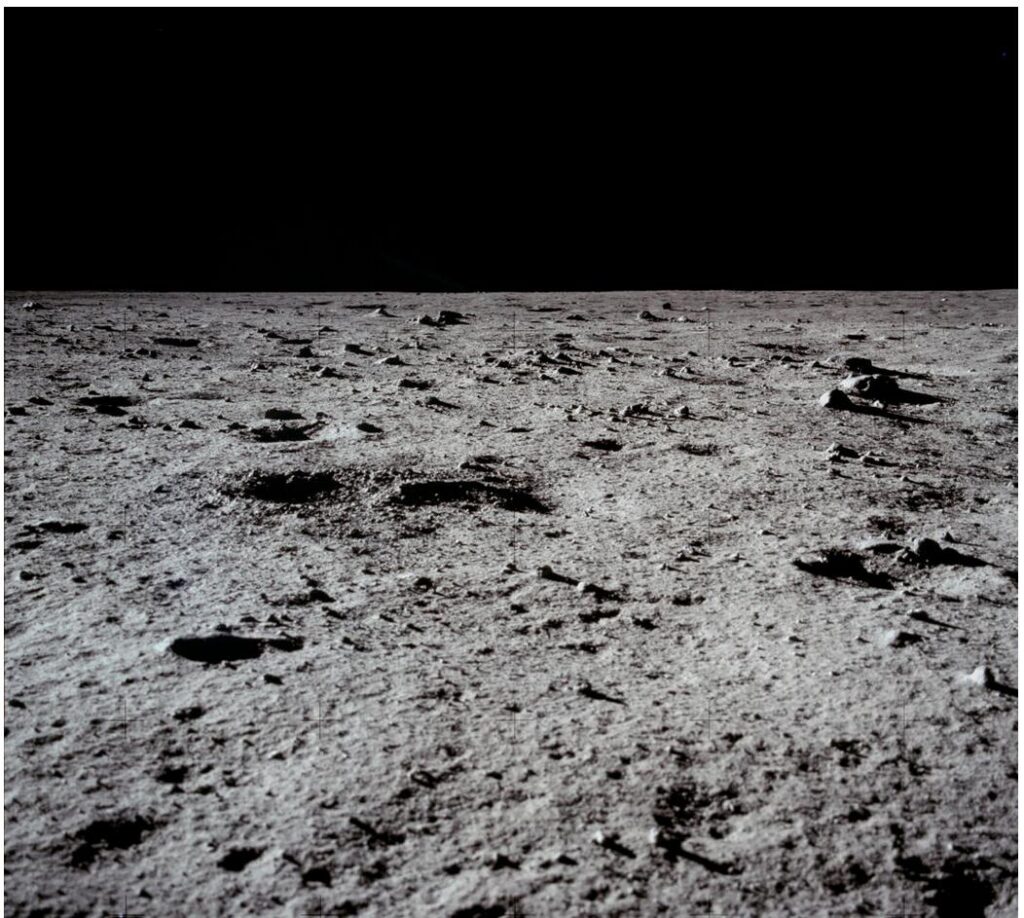
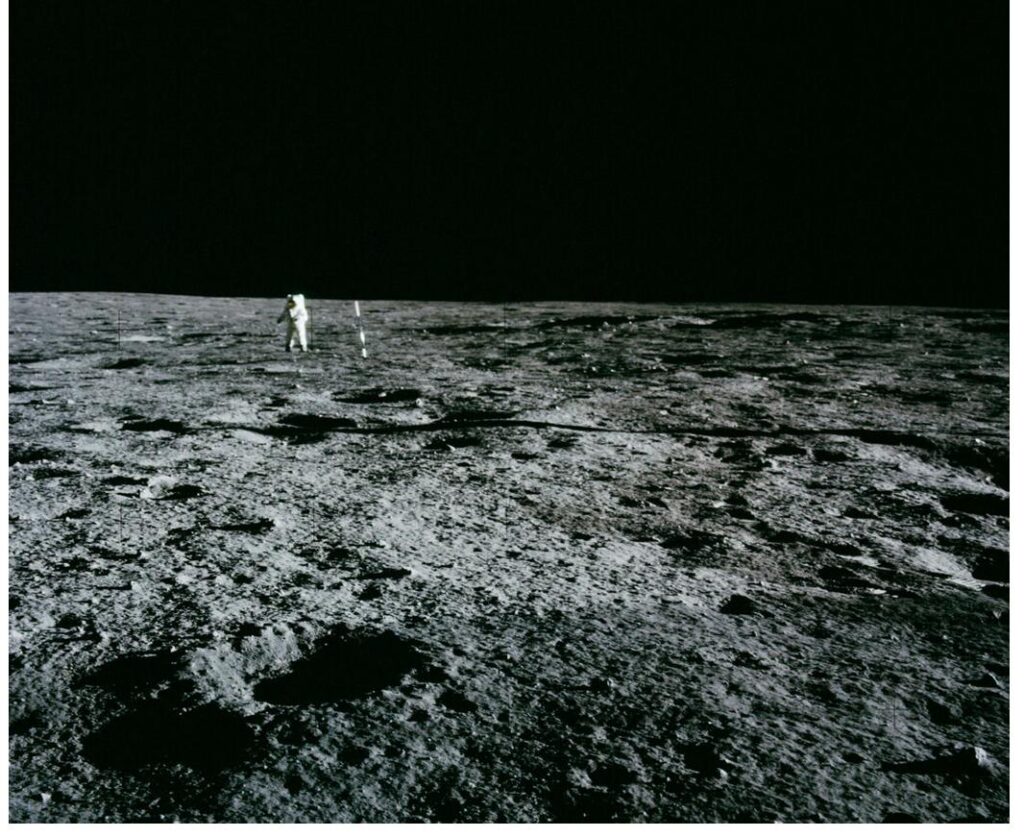
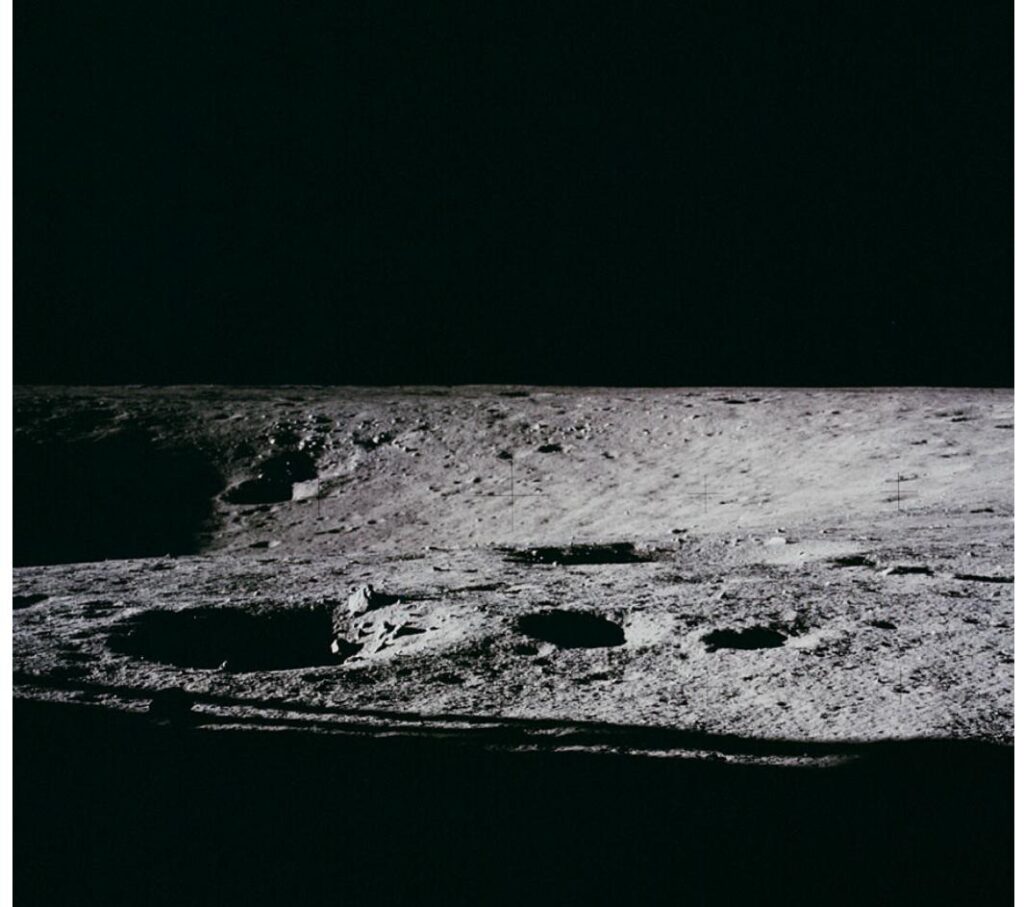
One thing that I love about the ‘debunking’ websites, by the way, is how frequently they contradict themselves while working their way through their ‘debunking’ checklists. The ever-pompous Phil Plait, proprietor of the appropriately named BadAstronomy.com website, is a prime example. Fairly early on in his ‘debunking’ rant, he writes as follows: “I’ll say this here now, and return to it many times: the Moon is not the Earth. Conditions there are weird, and our common sense is likely to fail us.” Plait does indeed return to it often, whenever it advances his argument to do so, but he just as frequently tosses his own cardinal rule aside when that is what serves his purposes – like, for example, just four paragraphs later, when he advises readers to “go outside here on Earth on the darkest night imaginable and take a picture with the exact same camera settings the astronauts used, you won’t see any stars! It’s that simple.” Ever the coy one, Phil doesn’t tell us what those “camera settings” are, but he clearly implies that the same settings were used in every photo, which clearly is not the case. Phil also conveniently forgets that the view from the Moon is not filtered through an atmosphere, so the stars have many times the luminosity as here on Earth. Phil’s little experiment, therefore, is entirely invalid, since he forgot to take into account that conditions on the Moon “are weird.” And as with all the ‘debunkers,’ he also forgot to explain why it is that no one thought to expose a photo or two to specifically capture the brilliant display of stars. Legend holds that a dozen astronauts walked upon the surface of the Moon for varying amounts of time. The Apollo 17 astronauts alone were purportedly there for three days. For the duration of their visits, each of the twelve would have been treated to what was by far the most dazzling display of stars ever seen by the human eye. What they would have seen was many times more stars burning many times brighter than can be seen anywhere here on planet Earth. Collectively, the dirty dozen took thousands of photos throughout their alleged journeys. And yet, amazingly enough, not one of them thought it might be a good idea to snap even a single photograph of such a wondrous sight. Of course, endless photos of the lunar modules and the monotonous lunar surface are exciting too, but just one or two photos of that dazzling lunar sky might have been nice as well. It’s as if someone went to Niagara Falls and the only photos they brought back were of the car they drove sitting in a nondescript parking lot. Now let’s turn our attention to the subject of shadows. As skeptics have noted, some of NASA’s photos seem to depict nonparallel shadows, indicating more than one light source. ‘Debunkers’ have claimed that all such discrepancies can be explained by “perspective” and topographical variations on the surface of the Moon. And truth be told, many of the images that I have seen on websites on both sides of the aisle are ambiguous enough that such explanations can be plausibly argued. But there are, as it turns out, images in NASA’s collection that aren’t quite so easy to debunk. There are, in fact, images that demonstrate unequivocally that more than one light source was used. Take, for example, the image below of one of the landing pods of the Apollo 11 lunar module, allegedly parked on the surface of the Moon.
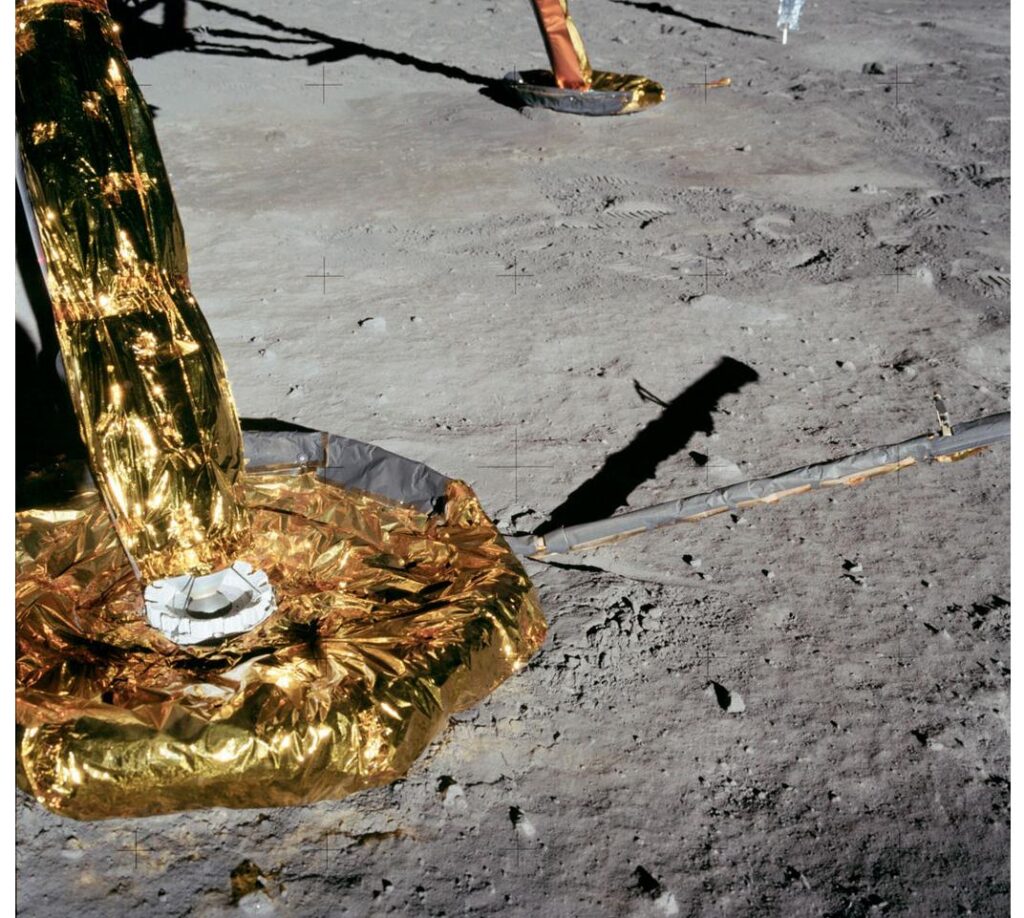
The primary light source, meant to simulate the sun, is obviously positioned to the right of the scene, as is clearly demonstrated by the shadows of all of the objects in the background. But there is just as obviously a secondary light source coming from the direction of the photographer. We know this because we can see in the foreground that the shadows coming off the small ‘Moon rocks’ point away from us. We know it also because we can see the light being reflected off of the gold foil wrap onto the ground in front of the pod. But we know it most of all because we can actually see the light reflected in the foil wrap on the leg of the pod! The shadows in the foreground and in the background are at nearly right angles, a phenomenon that cannot, by any stretch of the imagination, be explained away as a perceptual problem – especially when we can clearly see the reflection of the secondary light! One other question concerning this particular photo: how do you suppose you would go about capturing such a low-angle shot with a chest-mounted camera? Was the astronaut/photographer standing in a foxhole? The other issue involving shadows concerns the fact that, in the majority of the photos allegedly taken on the Moon, objects lying in the shadows are clearly visible even though, due to the Moon’s lack of atmosphere and the fact that sunlight therefore does not scatter, those shadowed areas should be completely black. The Moon, you see, is kind of a black and white world. If something is in the direct path of the unfiltered sunlight, it should be well lit (on one side); if it’s not, it should be as black as NASA’s starless lunar sky.

The ‘debunkers,’ of course, have an explanation for this. Let’s turn once again to BadAstronomy.com for that explanation, since that seems to be the website that all the other ‘debunking’ websites consistently reference and link to, the one that all the major media outlets endorse, and the one that even NASA apparently refers skeptics to. According to the site, “The lunar dust has a peculiar property: it tends to reflect light back in the direction from where it came.” Plait them goes on to provide the following explanation of the lighted shadows phenomenon: “Let’s say the sun is off to the right in a picture. It is illuminating the right side of the lander, and the left is in shadow. However, the sunlight falling beyond the lander on the left is being reflected back toward the Sun. That light hits the surface and reflects to the right and up, directly onto the shadowed part of the lander.” In the previously cited example, Plait managed to make it through four entire paragraphs before contradicting himself. Here he has easily shattered that record by, incredibly enough, contradicting himself in back-to-back sentences! And this, keep in kind, seems to be the best ‘debunker’ that NASA has to offer (it is unclear whether Plait is a paid shill or simply a useful idiot; it other words, it is unclear whether he actually believes the stuff he writes or whether he is knowingly lying his ass off, but the latter seems far more likely). Plait is right on the money when he says that the light falling beyond the LM on the left would be reflected “back toward the sun.” Unfortunately, he then immediately contradicts himself by claiming that that same light would be reflected “to the right,” onto the module. The only way that that could happen, as Plait surely knows, is if the light were to shine through the lander and reflect off the shaded portion of the soil. But that makes no sense, of course, just as Phil’s explanation makes no sense. Light does not disperse on the Moon, as Plait himself notes elsewhere on his website. And the surface of the Moon (or at least what passes for the surface of the Moon in NASA’s photos) is not a very reflective surface, as can be clearly discerned in the photographs. Actually, it would be more accurate to say that the Moon is a very selectively reflective surface, with the light choosing to reflect only on the astronauts and on flags and other patriotic symbols. Not too surprisingly, Plait once again invites readers to reproduce the effect right here at home, completely ignoring the fact that, as he himself has acknowledged, light behaves in entirely different ways here on Earth than it does on the Moon. Plait also claims that, “A nifty demonstration of the shadow filling was done by Ian Goddard and can be found here. His demos are great and really drive the point home.” In truth, Goddard’s “nifty demonstrations” are entirely dependent upon the effects of atmosphere causing the light to disperse, and thus they have no validity whatsoever. I forgot to mention in the earlier discussion, by the way, that Plait also appealed to readers to conduct an Earth-bound experiment to ‘debunk’ the diverging shadows conundrum. According to Phil, “You can experience this for yourself; go outside on a clear day when the Sun is low in the sky and compare the direction of the shadows of near and far objects. You’ll see that they appear to diverge. Here is a major claim of the HBs that you can disprove all by yourself!” Here is another experiment that Plait might want to try himself: go outside during the daytime on any day of your choosing and look up at the sky. If it is absolutely jet black, then feel free to continue advising your readers to conduct Moon simulations here at home. If it is blue, however (or gray, or white, or pretty much any color other than black), then stop pretending as though conditions on the Moon can be replicated here on Earth when we all know better (or we all should). And when you’re done with that experiment? Give the camera-to-the-chest challenge a try and let everyone know how well that works out for you. And try to get some of those low-angle shots that NASA likes. The truth is that even though a limited amount of light would reflect into the shadows, there is still way too much detail visible in the shadows in virtually all of NASA’s photos – if the arguments that NASA and Plait put forth earlier are at all accurate. As readers will recall, the earlier claim was that the lunar surface and the astronauts’ spacesuits were so dazzlingly bright in the unfiltered sunlight that very fast shutter speeds and very small apertures were required to avoid overexposing the shots. The problem for NASA and its attack dogs is that you can’t have it both ways. If the camera is stopped down to avoid overexposing extremely bright highlights, it cannot simultaneously capture full detail in the shadows. And if the aperture and shutter speeds are set to capture detail in the shadows, the camera would necessarily also capture the brilliant stars, which would be far brighter than anything lying in the lunar shadows. Other planets would be pretty hard to miss in the lunar sky as well, though none can be seen in any of NASA’s photos. Do you remember, by the way, what Windley told us earlier about the relationship between the aperture setting and depth of field? The basic rule is that the smaller the aperture setting, the greater the depth of field will be. With a wide aperture, conversely, the photo will have little depth of field. That is why portrait photographers tend to shoot with the lens wide open, to deliberately isolate the subject from foreground and background elements. Landscape photographers, on the other hand, stop the lens down to keep the entire scene in focus. With that bit of basic photographic knowledge in hand, it is fairly easy to determine whether NASA’s photographs were, in fact, taken with a very small aperture setting. And a good place to start, I suppose, is with the very first photo allegedly taken by a man standing on lunar soil. Below is what is alleged to be Armstrong’s very first attempt at lunar photography, just after climbing down from the module.
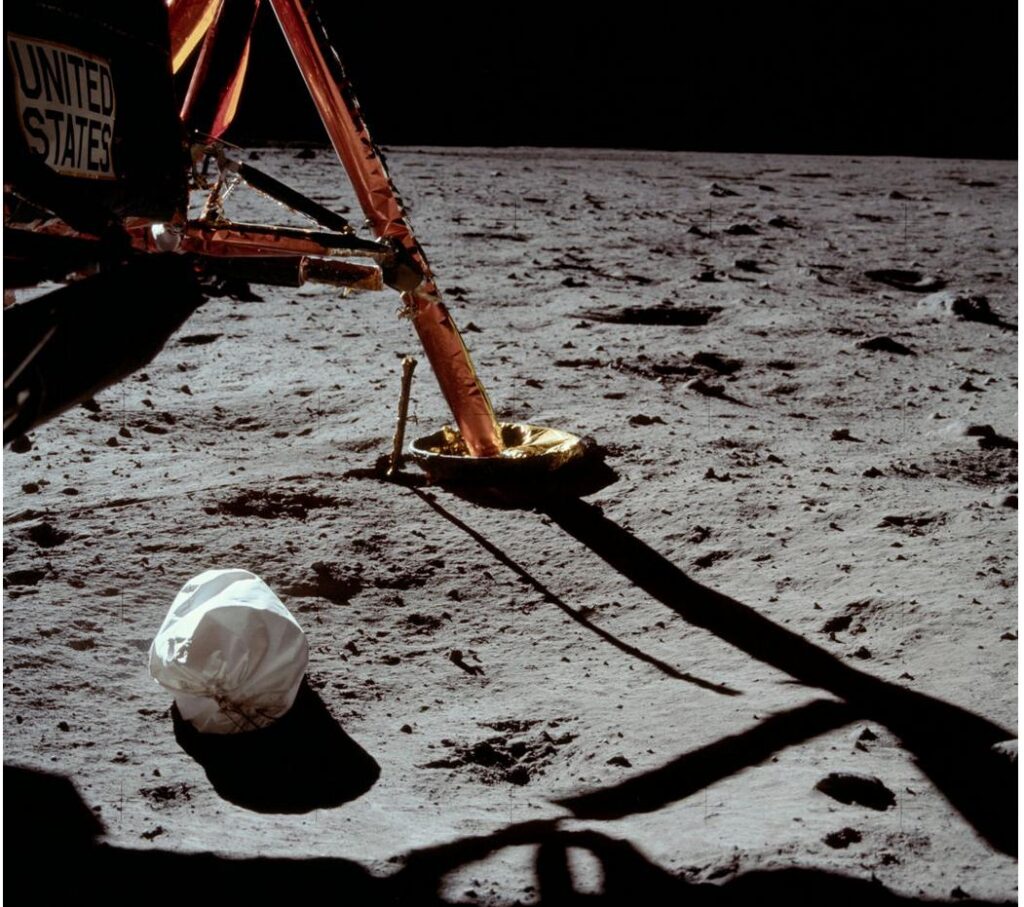
First off, I think we can all agree that, under the circumstances, it’s a pretty damn good first effort. There are problems right off the bat, of course, with the fact that the shadows are obviously lit with a diffused secondary light source, or else we wouldn’t be able to see the top of the bag, or the United States sign, or the shadowed side of the landing strut, but what we’re really looking for here is depth of field, which this photo has very little of. The photographer has focused on the United States sign (and he did it blindly!), but little else is sharply focused. Hence we know, from the very first shot, that the ‘debunkers’ are lying about the exposure settings. Moving on to Armstrong’s second alleged photo, seen below, we again find that there is very little depth of field. Both the foreground and the background are quite blurry, indicating that it clearly was not taken with a small aperture setting. And yet there is nary a star to be seen.
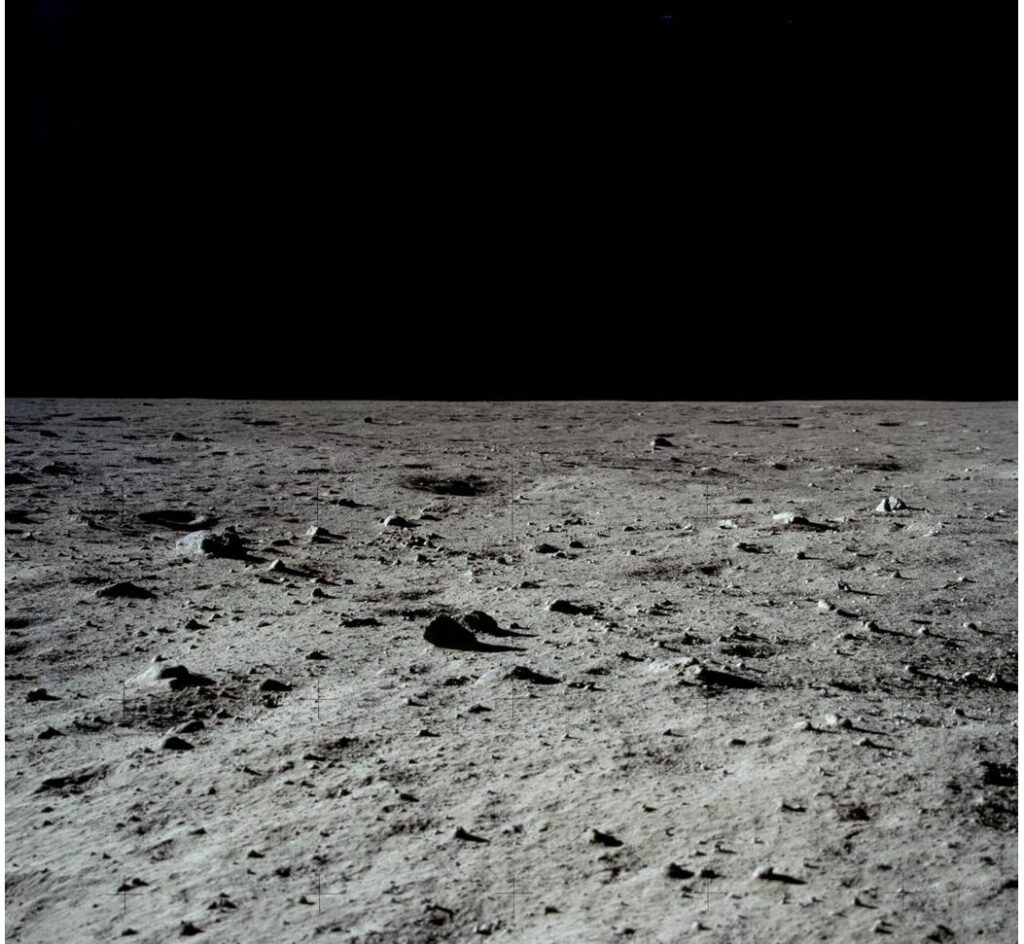
Before moving on, there is one more of Armstrong’s photos that I feel obligated to present here. It is, after all, his masterpiece, as well as being probably the most iconic of all the Apollo photos. I am talking, of course, about the so-called “Man on the Moon” shot of cohort Buzz Aldrin, seen below (which is probably not actually Aldrin; my guess is that the same two actors did all the Moonwalking in the videos and photos from the alleged missions).
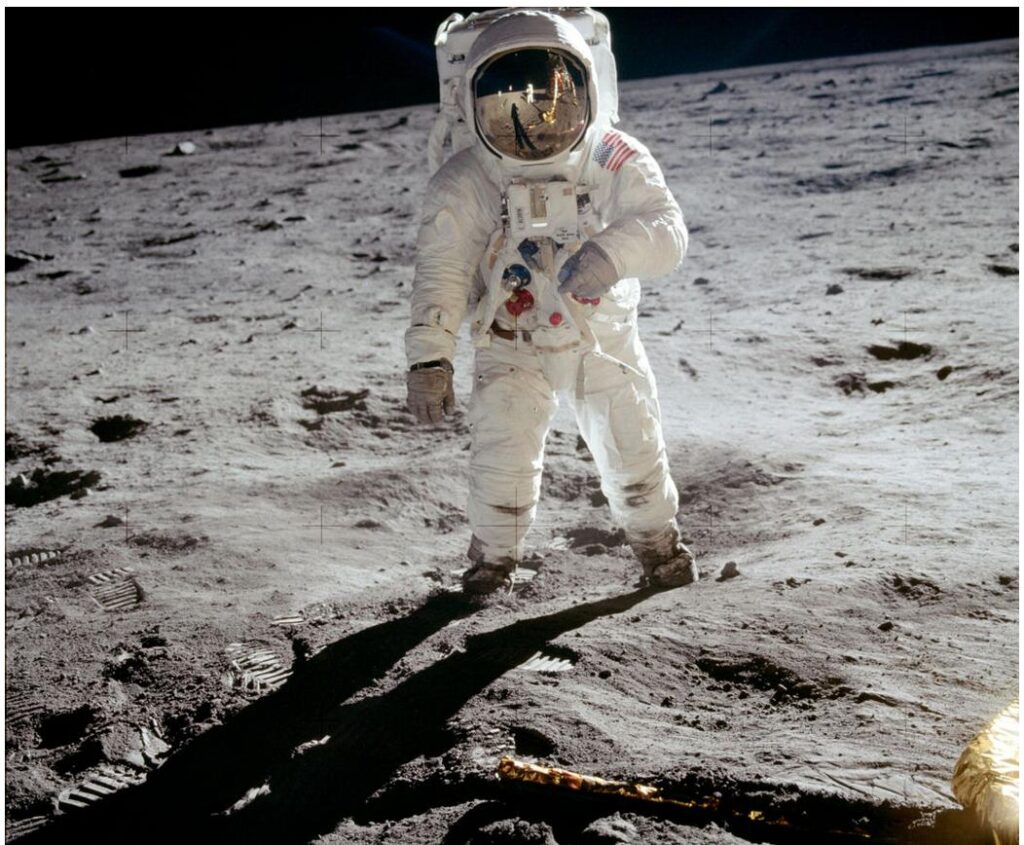
We must first, of course, compliment Neil on the awesome composition. It hardly looks staged at all. But there are problems here. Once again, I’m just not seeing the depth of field that Windley promised us. It’s also pretty hard not to notice that Buzz’s spacesuit isn’t pressurized. Furthermore, the surface of the ‘Moon’ is quite unevenly lit, indicating that the light source used was much closer than the sun. And then there is the noticeable lack of any shadowing on Buzz’s spacesuit. He’s casting a shadow on the ground, but there is no corresponding shadowing of his body. Even here on Earth, that is only possible with a secondary light source. There are some photos in NASA’s collection that were taken without a secondary light source, so we do know what fake Moon landing pictures should look like. The action shot below of the lunar rover, for example, was taken without a secondary light to fill in the shadows. The shadows still aren’t quite as dark as they would be on the Moon, but the difference between a fake Moon shot taken with a fill light and a fake Moon shot taken without a fill light couldn’t be more obvious.
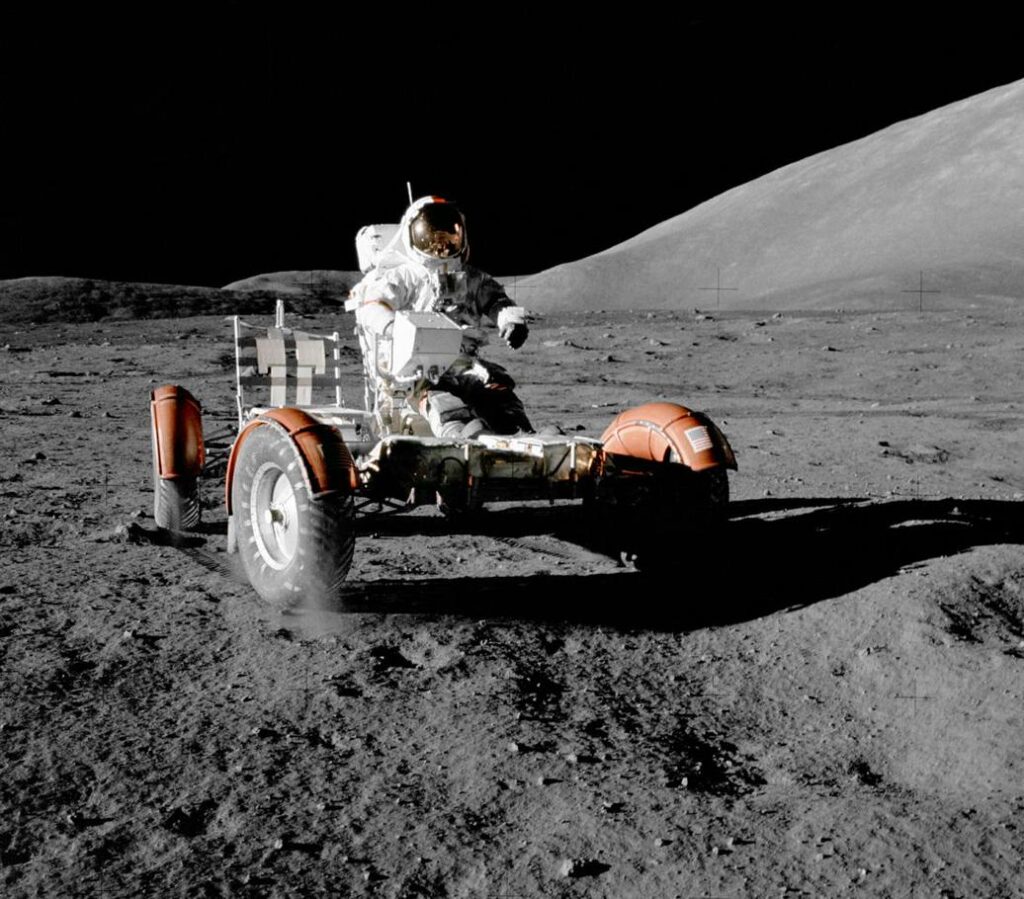
NASA liked the “Man on the Moon” image so much, by the way, that they essentially restaged it for the Apollo 12 mission. As can be seen below, a secondary light was used for that shot as well. Without the fill light, there is simply no way that a portion of the astronaut’s spacesuit would not be shadowed, as it is in the rover photo above.
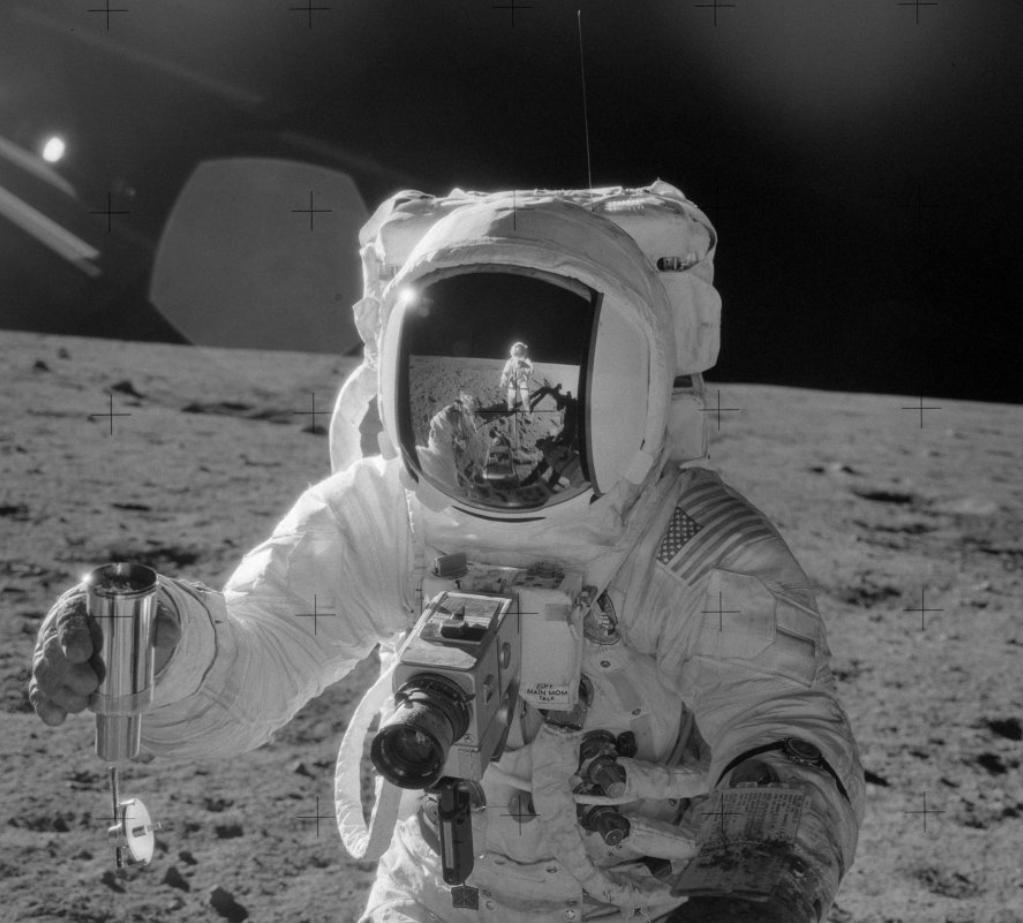
Moving on then to the next issue, we have the mystery of the disappearing crosshairs. The problem, according to skeptics, is that the crosshair reference marks, which were etched into the camera’s lenses and therefore should always appear on top of any objects in the photos, sometimes disappear behind those objects. Plait actually gets this one correct in explaining the phenomenon as a problem of overexposure and contrast. When some of the brighter objects in the photos are overexposed, the fine crosshairs tend to get washed out. That is in fact a reasonable explanation for the effect (by the way, I mentioned before that I was not a rocket scientist; I am, however, a photographer). The claim that the cross-hairs should be visible presupposes that NASA added objects to the photos, creating composites. I seriously doubt though that that would have happened. The scenes appear to have been very carefully staged before the photos were taken, so there would have been no need for cutting and pasting. And if NASA had planned on adding additional elements to the photos, I doubt that they would have complicated that process by using cameras with cross-hairs; it would have been much easier to create the composites first and then overlay the grid marks on top of them. However … the same can certainly not be said of the images that purport to show various parts of the ship flying through space. Take the image below, for example, which is supposed to be a two-dimensional rendering of a three-dimensional scene of the command and service modules in lunar orbit. If it were an actual three-dimensional scene, the spaceship would be 69 miles above the lunar surface – which would, I would think, make it difficult for a portion of that lunar terrain to obscure part of the ship’s S-band antennae assembly.
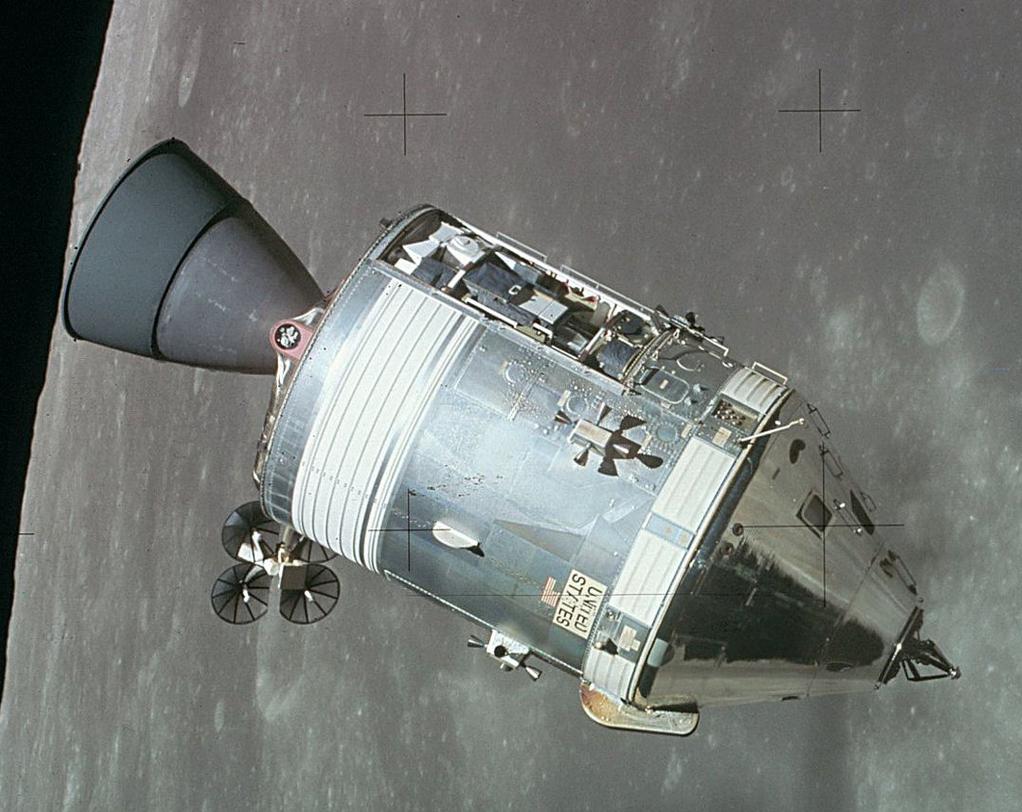
The shot, as can be seen in the enlargement below, is clearly a composite. And not even a very good one. So it is entirely possible that some of the photos allegedly shot on the Moon are composites as well. I obviously haven’t studied every one of them. I’m just saying that the ones that I have seen that have disappearing crosshairs do not appear to be composites.
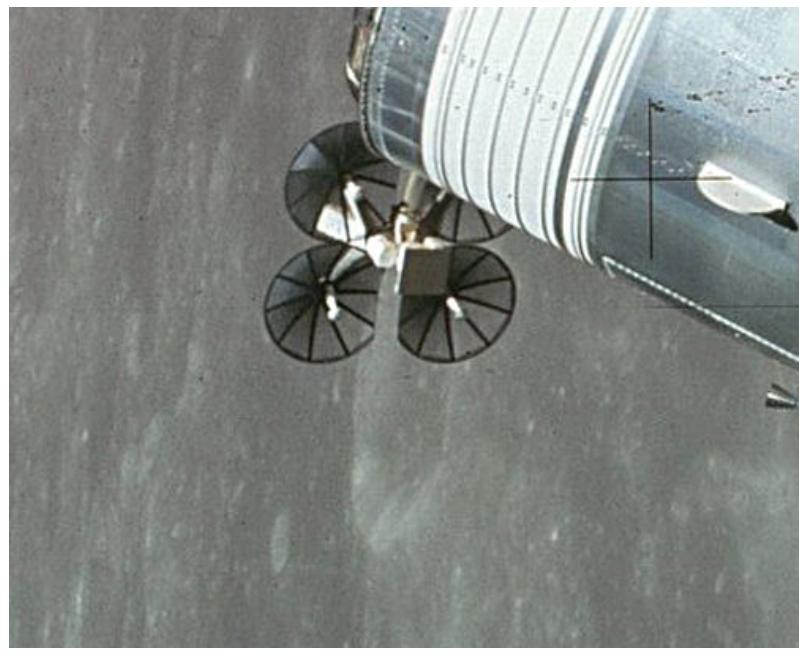
The next problem with the NASA photos is that some of them seem to have identical backgrounds but different foregrounds. As Phil Plait explains, “In one [photo], they show the lunar lander with a mountain in the background. They then show another picture of the same mountain, but no lander in the foreground at all. The astronauts could not have taken either picture before landing, of course, and after it lifts off the lander leaves the bottom section behind. Therefore, there would have been something in the second image no matter what, and the foreground could not be empty.” Plait begins his debunking by stating, rather hilariously: “As always, repeat after me: the Moon is not the Earth.” Plait goes on to claim that distances are very difficult to judge on the Moon and that the two photographs were actually taken from much different angles, and yet the background remains virtually unchanged because, despite appearances, it is a really, really long ways away. Either that, or one of the astronauts was really David Copperfield. The two photographs appear below. I’ll leave it to readers to decide whether, as Plait claims, the ‘mountains’ are in fact many, many times further away from the lander than the lander is from the photographer. And I’ll do so while noting that Phil provides neither the photographs nor a link to them, but instead asks readers to accept what he says on faith. I wonder why he would do that if he were so sure of his conclusions? I also wonder why, in the final photo, the lander appears to be parked much closer to the ‘mountains’ than Plait would have us believe.
No Debt Deal Yet – Biden Set to Leave DC tonight
As of 8:05 AM EDT- there is still no deal to raise the US Debt Ceiling. VERY conflicting reports coming out of DC this morning; some say a deal is “close” while others say there’s little to no movement by either the President or Congress.
Meanwhile, Treasury Secretary Janet Yellen is allegedly saying today that the US Gov’t can make it until June 9 before actually defaulting. Interesting how, for weeks, she’s been saying “June 1” and now, all of a sudden, the date gets moved to June 9. Tells me this is all “theater.”
When you take a moment to stop and actually think about it, they need to BORROW money, to pay the loans for what they’ve already BORROWED! The whole thing is absurd.
Since no one in their right mind is buying their debt, the phony “Federal Reserve” which is neither “federal” nor a “reserve” buys the debt using phony money created out of thin air via computer entry, and the whole shebang keeps rolling on.
This truly has become a circus and the elected politicians in Washington DC are the clowns.
The 10 Worst Fast Food Failures
Speaker McCarthy has left the Capital for the Weekend; No Debt Ceiling Deal
House lawmakers Thursday evening left the Capitol for the holiday weekend without a deal on the debt ceiling.
Joe Biden waited 97 days to engage in debt ceiling talks with House Speaker McCarthy and other congressional leaders.
The White House is facing a June 1 deadline, but today, Treasury Secretary Janet Yellen said she thinks they can stretch that to June 9 before the US Defaults on its debts.
House Republicans passed a debt ceiling resolution in April but the White House is blaming the looming default on the GOP.
Why has India been invited as a guest in the G-7 summit 2021, while China has been kept away from this summit?
The First Ranker is always nervous about the Kid who is ranked second and is fast catching up to him
This is what life is.
That is what China has become.
The United States has marked and identified China as its direct rival.
Obviously China will now be excluded in major events just like you wont see Ambani and Bezos OR MGR and Karunanidhi in too many places together.
China is too powerful now.
The World fears China because it is too dependent on China. They were sleeping when China slowly grew and grew and grew until now it threatens to consume the world.
Simple example- You have something called a BLDC (Brushless DC) Motor that powers many many items. 83% of these motors are manufactured in China. Tomorrow if China stops this for 6 months – Hard Disks, Processor Units, Laptops, BLDC Fans (Popular in Europe due to less Power) will all come crashing down. The damage to the World will be 30 times the damage to China.
This is true for almost every market in the world. China can rattle and destroy any of these markets if they decide to Kamikaze themselves (Kamikaze – as in commit suicide) and damage them too much.
(China luckily wont do that – they love money too much)
Even Huawei bans are not working. The others are too expensive and mobile networks are protesting. They will fund the Labor Party or oppositions with oodles of money and vote them out to ensure Huawei remains.
No Matter What China does – The West will not be satisfied. China is the first country on Earth since perhaps 1600 which has directly threatened the power of the West
My belief is the Exclusion will continue – 2022 Games, International Space Station, G7, UNSC Etc.
My Belief is China will ultimately form its own bloc with Russia, Iran and countries who dont subscribe to the US is the God theory.
Meanwhile India – India is very much a developing country which threatens nobody. It is the only stable democracy in that region consisting of the Unstable Pakistan, China Allies Nepal and Bangladesh, Military ruled Myanmar and Autocratic China.
Of Course India will be included. I predict by 2024 – India may even become a permanent member of the UNSC – and Iran and Russia may leave the UN to form a Bloc with China.
Of course Economically – nothing will change. Businessmen and Consumers still need the cheapest and best goods – so they will continue to buy from China.
And Politicians who try to change that will be voted out faster that you can say “Elections”
Ouch!

They knew it was worth it. look att’em

Joe Walsh – Life’s Been Good (Live)
Why can’t the USA leave the world in peace? Americans are meddling in the affairs of others and sanction or invade those countries who are not aligned with them.
There’s an American sitcom about this. It’s called “Two broke girls”.
One girl was a rich, wealthy child of an oligarch. That was, until her father was arrested and jailed. She lost everything, and had to work as a waitress to make ends meet.

Don’t worry.
Soon enough the collective population of the West will get to live the sitcom “Two Broke Girls”. And no more military bases around the world. No more billions to Ukraine. No more color revolutions. No more lecturing to the people about what they can and cannot do.
It’s going to be OVER.
Bachman Turner Overdrive – Roll On Down The Highway (1975)
A tale of high speed rail

Girl Believes She Was a Pioneer in Her Past Life
https://youtu.be/nlaNbKIWRcU
F-16s To Ukraine
A few days ago U.S. President Joe Biden announced the training of Ukrainian pilots for the F-16 multirole fighter aircraft:
President Joe Biden told G7 leaders on Friday that the US would join in efforts to train Ukraine’s pilots on fourth generation fighter jets including the F-16s, a senior administration official told CNN on Friday.
This has obviously been in the planning for some time. The timing of the announcement at the G7 summit was simply chosen to maximize the propaganda value for Biden.
The process we have seen has repeated itself again and again. As pro-Ukrainian blogger (with no military knowledge) describes it:
This has clearly become a proxy war between Russia and NATO, supercharging the political considerations inherent to any war. Ukraine’s goal is to wheedle as much military aid as humanly possibly out of NATO, especially the United States. The United States’ goal is more complex: give enough aid to push Russia back, but not so much that its proxy war with Russia escalates into an actual one.This dynamic has created a Hunger Games scenario where Ukraine is constantly playing to the cameras to cajole extra gifts from the wealthy sponsors who watch its every move over the internet in real time. I had decided against using this analogy until I saw Ukrainians themselves using it. There is something grotesque and sobering about finding yourself in this position, and writing about it. But it is what it is.
I had assumed that F-16 training had in fact already started several weeks back. The EU blabber mouth Josep Borrell now all but confirmed it:
The European Union’s foreign policy chief said on Tuesday that the US green light to allow Ukrainian pilots to get training to fly F-16s has created an inexorable momentum that will inevitably bring the fighter jets to the Ukrainian battlefield.
…
Borrell added that training for Ukrainian pilots had already begun in Poland and some other countries, though authorities in Warsaw could not immediately confirm the news. The Netherlands and Denmark, among others, are also making plans for such training.No decision on actually delivering fourth-generation fighter jets has been taken yet, but training pilots now – a process that takes several months – will help speed up battle readiness once a formal decision is made.
The process will be much faster than many assume.
The jets the Ukraine will get have already been selected and will go through ready maintenance. The Ukrainian pilots, who already have some experience on other fighter jets, will get just a short introduction course – six to eight weeks or even less. They do not need to train air to air fights because the F-16 would lose any such fight against the newer and better armed Russian jets. They just need to learn the basics, starting, landing, going up to a certain height and launch point, release whatever long range weapon will be on board. Anything else would be suicide.
The big question is where to start and land from. The F-16 has a relative short combat range of some 500 kilometer and there will be no air to air tankers. There ain’t that many airfield that are suitable for the fighter jet’s missions.
Someone who seems competent explains the problem (edited):
The Ukrainian Air Force, to my knowledge, has had to use guerilla airfield tactics to keep the Russians guessing as to where they are operating from. This is to prevent Moscow from targeting the aircraft/impromptu airfield from drone attacks and air strikes, destroying stationary aircraft or the rendering the “runway” unusable. Soviet-built aircraft are sublimely suited to this.For ex, the MiG-29 “Fulcrum” uses automatic Foreign Object Debris (FOD) covers that close for initial start up (vid). Meanwhile louvres located at the top of the wing-root open to provide alternate air intake to the jet engines. Upon take off, once the weight on wheels (WoW) switch in the nose gear detects it is off the ground, the louvers cycle closed and the FOD covers on the primary intake retract, allowing max airflow to the engines once the danger of FOD damage has passed. This ingenious design allows the Fulcrum to operate, not only from unimproved runways or even highways, but even from grass fields. The wing itself and the distance to the ground preventing small stones and debris from getting sucked into the delicate engines.
I cannot stress how dangerous and debilitating FOD is to aircraft. A single rock, bolt, nut, or minor road debris can have a cataclysmic effect on a modern high-performance jet engine. It may not even happen immediately, the damage could happen on take off, then progressively get worse during flight as the blades, now potentially bent or unbalanced begin to self-destruct the engine internals. Even if a MiG-29 happens to shell out an engine because of the careless placement of a bolt or tool by a mechanic or the ingestion of a bird during flight or take off, the MiG HAS TWO ENGINES which are isolated in separate bays, preventing the destruction of one engine from FOD-ing out the second.
The F-16, by contrast, is definitely not suited for this style of airfield. The bottom of the intake lip sits approximately 30” from the ground with no provision of alternate intake. In addition, all the suction flow of that air comes from the sides, fore, and ground since no air can be ingested from above the engine (that’s where the fuselage is). With no provision for FOD protection or alternate, high-mounted intakes during the entire time spent on the ground, this calls for rigid and inflexible FOD control measures from the location of engine start, to taxiing routes to the runway.
In the USAF, this meant hundreds of maintainers walking at arms-length intervals two to three times a day with eyes on the ground looking for any and every piece of debris that could be ingested by the multi-million dollar vacuum cleaner with only ONE engine we were charged with maintaining. In addition, an almost constant procession of street-cleaners rumbled up and down the flightline, taxiways and runway. Everything had to be spotless lest we risk the aircraft, or worse, the pilots.
Imagine the preparation it would take to complete this process on a 10,000 foot long straight highway, in the dark, while trying to be as inconspicuous as possible so as not to draw the attention of collaborators or Russian spies. You couldn’t hop from highway to highway or run from unimproved airfields like the Ukrainian Air Force can do with MiG-29s, you’d be handcuffed or at the very least less mobile. Imagine a disused Soviet airfield that suddenly had all its weeds plucked from the cracks in the concrete, concrete patched, the runway spotless. What signal does that send? “F-16s could, will, or are operating from here.”
There are several other issues discussed in the above thread. The maintenance philosophy behind U.S. and Russian build planes is different. The Russians just change factory parts and systems, U.S. maintainer try to repair them locally:
The MiG-29 averages about 11 hrs of maintenance for every ONE hr of flight. The F-16? A whopping increase to 18.5 maintenance hrs for every one hr of flight time. These are per aircraft with experienced crews. These figures also assume decent airframe hours on the aircraft.
The Ukraine will also need a sufficient number of competent maintainers. The training for them will likely take more time than for the pilots. The author of the above suggests a solution:
Plenty of mechanics in Europe and the US are happy to lend their services to the UAF as members of the “International Legion” or the modern day iteration of the “Flying Tigers”. Myself included.
Well, good luck doing maintenance on the F-16s that will soon sit on those few available and thereby quite vulnerable Ukrainian airfields.
Russian air defenses, from the ground and from the air, can certainly suppress any F-16 flights coming near to them.
The only sensible purpose of those planes is thereby their one or two time use as a launching vehicles for long range missiles like the British Storm Shadow cruise missiles that were given to Ukraine. It is easy to train for those missions but I doubt that they will make any noticeable difference.
Posted by b on May 23, 2023 at 14:53 UTC | Permalink
It’s Official: Russia Declares Intent to make PRE-EMPTIVE NUCLEAR STRIKE if West goes ahead with Ukraine Getting “Nuclear-Capable” F-16’s
26 May 2023
The possible transfer of nuclear weapons to Ukraine from the West will cause a preemptive strike by Russia, said Dmitry Medvedev, deputy chairman of the Russian Security Council.
The statement was made during his visit to Vietnam.
Medvedev explained that the allies of Ukraine can put into service not only F-16 fighters, which is no longer excluded, but also nuclear weapons.
As reported by the Hal Turner Radio Show in a Subscribers-Only report on 23 May, debate within NATO over supplying Ukraine with F-16’s centers around the United States INISISTENCE the planes be a specially-modified model capable of carrying the U.S. “B-61” free-fall nuclear bomb. The U.S. is also insisting that NATO countries train Ukraine pilots on how to utilize such nuclear bombs. (That original Subscribers-Only story appears HERE
)
This has caused a gigantic rift within NATO. The United States, Great Britain, Poland, and Germany are in favor of this idea.
While Turkey, Greece, and Hungary are very much against it.
“If this happens, they must be prepared for a retaliatory strike with a nuclear charge” said Medvedev.
Medvedev emphasized that if the situation comes to the point that nuclear weapons are being transferred to Ukraine, a preventive strike from Russia becomes inevitable.
He expressed confidence that many in the Western world are not fully aware of the seriousness of this issue, believing that the situation will not reach such a critical level. However, according to Medvedev, under certain circumstances, the situation may come to this.
A similar statement was made in the context of Medvedev’s harsh response to the call of G7 countries for the inadmissibility of nuclear war.
“They demand some guarantees from Russia on nuclear weapons, but, in fact, imply the possibility of a future nuclear conflict between our country and NATO”, – noted Medvedev.
Jo Jo Gunne – Run Run Run
on reforming the inherently archaic and dysfunctional political body, China’s foreign policy chief, Yang Yi, stated his country’s demands.
“The reform of the Security Council should uphold fairness and justice, increase the representation and voice of developing countries, allowing more small and medium-sized countries to have more opportunities to participate in the decision-making of the Council,” Wang Yi said
in a statement on April 29.
More specifically, the new UNSC must “redress historical injustices against Africa”.
Although calls for reforms of the UNSC have been made many times in the past, Beijing’s position is particularly important in both language and timing.
When the United Nations was founded
in 1945 following World War II, it was meant to mark the rise of a new world order, one that was largely dominated by the winners of that horrific war, giving greater influence to the United States and its Western allies.
Indeed, of the 51 founding members of the UN back then, five countries were chosen
to serve permanently on the Security Council – the executive branch of the UN. The rest were given membership in the General Assembly, which played a marginal and, at times, even symbolic role in world affairs.
Six other nations were allowed
to serve as non-permanent members of the Council, though they were not granted the same veto power held and exercised by the five powerful UNSC members only.
A few years later, in 1963, the non-permanent membership status, served through annual rotations, was expanded
to 10, making the total number of 15 UNSC members. However, the ‘reforms’ ended there, never to be revisited.
The UN was hardly ever a democratic platform, fairly reflecting the realities of the world, whether based on economic influence, demographics or any other indicators – aside, of course, from military might and political hegemony.
From the post-WWII geopolitical realities, however, the UN perfectly expressed a sad, unfair, but also somewhat true global power paradigm.
That paradigm, however, is now shifting, and rapidly so.
Calls for reforms have been underway for years, reflected
in the activities of the Group of Four (G4) – Brazil, Germany, India and Japan – for example; and the Sirte Declaration
of the African Union (AU) in 2005, among others. But the renewed calls for reforming the UN in recent months have become louder, more significant and, indeed, more possible.
The Russia-Ukraine war, which has divided the world into political camps, further empowered China – the world’s soon-to-be largest economy – and emboldened many countries in the Middle East, Africa and South America.
Of the many indicators of a global power shift, the BRICS nations – Brazil, Russia, India, China and South Africa – have proven
to be the greatest success story in challenging Western dominance over global markets and the status of the dollar as the world’s main currency.
As BRICS readies for a major membership expansion
, it is poised to become the world’s leading economic forum – ahead of the powerful G7.
One of the BRICS members, India, as of April 2023, overtook
China to become the world’s most populous country. Along with China and the combined demographics and wealth of other BRICS countries, it becomes unacceptable that a BRICS member like India, is still not a permanent member of the UNSC. The same logic applies to Brazil.
India’s UN Ambassador, Ruchira Kamboj, recently referred
to the UN Charter as “anachronistic”. “Can we practice ‘effective multilateralism’ by defending a charter that makes five nations more equal than others and provides to each of those five the power to ignore the collective will of the remaining 188 member states?” Kamboj said during a debate on the UN Charter.
Of course, she is right. Her logic, however, carries much greater weight now that her country – along with other BRICS nations, the collective power of the African Union among other nations and political entities – is in a much stronger position to bargain for substantive change.
China, on the other hand, is already a permanent UNSC member and a holder of the veto power.
The fact that Wang Yi is demanding serious changes at the UN, particularly in the makeup of the Security Council, is a powerful indicator of China’s new global foreign policy agenda. As a rising superpower with close and deepening ties with many countries in the Global South, China rightly believes that it is in its interests to demand inclusion and fair representation for others.
This is an unmistakable sign of political maturity by Beijing, which will surely be resisted by the US and other European powers.
The West is keen on either maintaining the UNSC’s West-leaning status as it is, or, if it must, engaging in superficial or self-serving reforms. This would be unacceptable for China and the rest of the Global South.
The UN’s reputation is already in tatters following its failure to address international conflicts, climate change, global pandemics and more. If not reformed to address global challenges through more democratic means meaningfully, the UN will risk its future relevance, if not its very existence.
Going to war is a FAILURE of diplomacy.
China, which has endless lists of successes, is not prone to failure. From poverty elimination to coronavirus, from high speed trains, to technological advancements. China runs things with intelligence, and fully funds efforts lead by merit. For China to fail at something; anything would be truly a rare event.
The United States, at least in the last fifty years, has a near endless list of failures. It seems that there is nothing it can get right. From a simple pedestrian bridge, to building a high speed rail. From solving homelessness, to simple maintenance of roads and bridges, the United States is flailing and failing at everything.
Now, let’s talk “WAR”.
China who is able to succeed in anything it puts it’s mind to, and the United States that fails at everything. The two nation go head to head.
What is the probable outcome?
- The United States will start a war.
- It will under-estimate China.
- It will make foolish decisions.
- It will under supply.
- It will make political decisions instead of practical ones.
- It will count on allies who are unreliable.
- It’s media will spew out disinformation.
- It will bear tremendous losses.
- China will finish the war.
- Nothing will be reported.
- It’s all robotic, calculated, precise and detailed.
- It will be one surprise after the other.
- China will dictate the terms of American surrender.
And that is that.
And everyone knows that this is what will happen. You can put lipstick on a pig, but after all, a pig is still just a pig.



It is too bad they put Gonzalo Lira in jail. He predicted that this moment would occur and he was right. He said when it became clear that they can’t win, then the army would collapse and disperse. Soldiers shooting their superiors is a sure sign this is near.
Fake as fake can be and Gonza who appeared out of nowhere CIA land isn’t in jail. I don’t understand how smart people that post on this blog can’t see thru the fog.
Hi ! I’ve a problem, with the pressurisation of the combinaison on the moon, where, if no atmosphere, seems near of a vaccuum, if you put some pressure in the combinaison, it would expand and explode, imho. We more would need an exosquelette to keep the astronaut at the good pressure, with breathable air. Like in Tintin “One did walked on the Moon”, the comic book by Hergé.